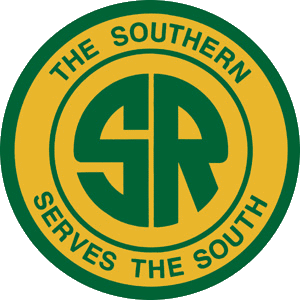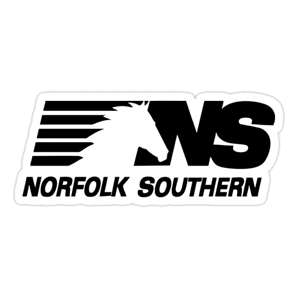
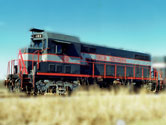



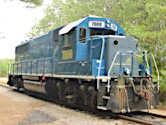


Pearl River Valley Railroad
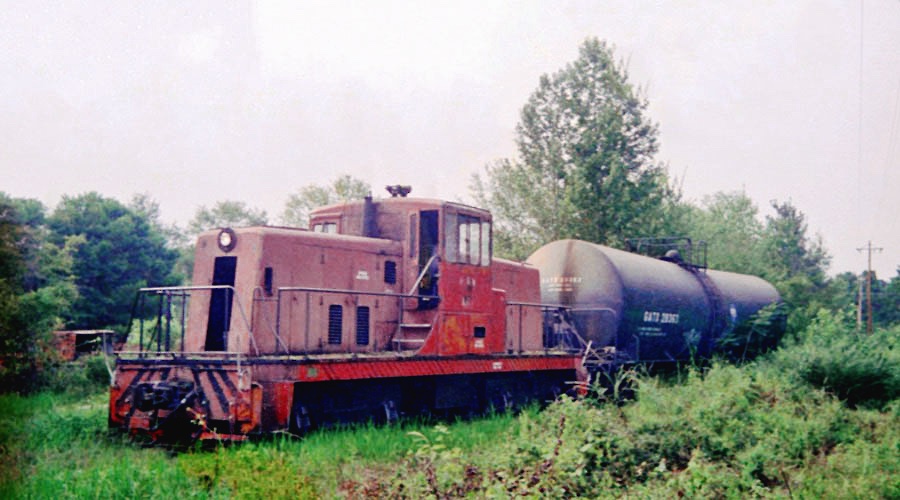
Nicholson, Ms / 2000 / James Christopher

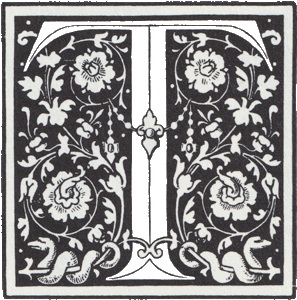 he Pearl River Valley is a 4-mile shortline running between its Norfolk Southern interchange at Nicholson and Goodyear (Picayune), Mississippi and the International Paper Company plant. The line, however, is now only a fraction of its former self which once served the lumber industry in this region of Southern Mississippi. The line is barely a railroad; it is more like a nature trail with rails and, unless one is aware that the PRV is there, most folks including railfans pass by the Nicholson-Picayune area without ever seeing it. The right-of-way resembles one of those old interurban or streetcar lines of yesteryear which is barely holding on and suffering from neglect. You may not find the PRV on many railroad maps, and some maps that do show it misidentify it with the Norfolk Southern's little-used NASA / Stennis branch. The Pearl River Valley Railroad could be classified as "old, rare, and obscure."
he Pearl River Valley is a 4-mile shortline running between its Norfolk Southern interchange at Nicholson and Goodyear (Picayune), Mississippi and the International Paper Company plant. The line, however, is now only a fraction of its former self which once served the lumber industry in this region of Southern Mississippi. The line is barely a railroad; it is more like a nature trail with rails and, unless one is aware that the PRV is there, most folks including railfans pass by the Nicholson-Picayune area without ever seeing it. The right-of-way resembles one of those old interurban or streetcar lines of yesteryear which is barely holding on and suffering from neglect. You may not find the PRV on many railroad maps, and some maps that do show it misidentify it with the Norfolk Southern's little-used NASA / Stennis branch. The Pearl River Valley Railroad could be classified as "old, rare, and obscure."
James Christopher, Jan 2001
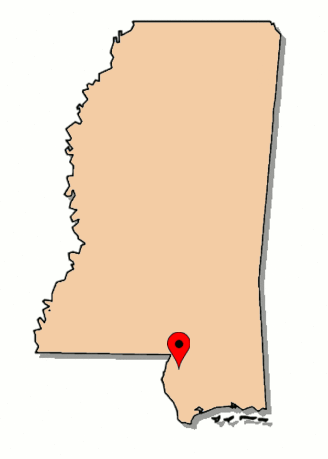
 otable in its later years for being one of Mississippi's shortest shortlines, the diminutive Pearl River Valley Railroad Company operated 4.69 miles of trackage from an interchange with the Southern Railway (later Norfolk Southern) at Nicholson north to Goodyear, Mississippi — just west of Picayune. Incorporated in 1917 to build as far north as Columbia (60 miles), the pike only ever made it as far as Rowlands, about 34 miles. The last logging operations in the region ended by 1938 and as such the railroad applied for permission to abandon operation of trackage rights on the line from Goodyear Junction northeast to New Rowlands, approximately 22.5 miles. The Goodyear Yellow Pine Company terminated its trackage agreement with the PRV in 1938, after which that longer section of line to Crosby and points north was removed. The remaining short segment of the shortline from Nicholson to Goodyear was thereafter operated to service the Crosby Forest Products and various Crosby-owned industries in the western part of Picayune, including Arizona Chemicals. Traffic was light in these years but included forest products and chemicals. Headquarters were in Goodyear, on a site now occupied by a municipal fire station. The shortline was finally abandoned about 2007. As of 2022, some tracks, structures, and equipment remain in place but are long unused and greatly overgrown.
otable in its later years for being one of Mississippi's shortest shortlines, the diminutive Pearl River Valley Railroad Company operated 4.69 miles of trackage from an interchange with the Southern Railway (later Norfolk Southern) at Nicholson north to Goodyear, Mississippi — just west of Picayune. Incorporated in 1917 to build as far north as Columbia (60 miles), the pike only ever made it as far as Rowlands, about 34 miles. The last logging operations in the region ended by 1938 and as such the railroad applied for permission to abandon operation of trackage rights on the line from Goodyear Junction northeast to New Rowlands, approximately 22.5 miles. The Goodyear Yellow Pine Company terminated its trackage agreement with the PRV in 1938, after which that longer section of line to Crosby and points north was removed. The remaining short segment of the shortline from Nicholson to Goodyear was thereafter operated to service the Crosby Forest Products and various Crosby-owned industries in the western part of Picayune, including Arizona Chemicals. Traffic was light in these years but included forest products and chemicals. Headquarters were in Goodyear, on a site now occupied by a municipal fire station. The shortline was finally abandoned about 2007. As of 2022, some tracks, structures, and equipment remain in place but are long unused and greatly overgrown.
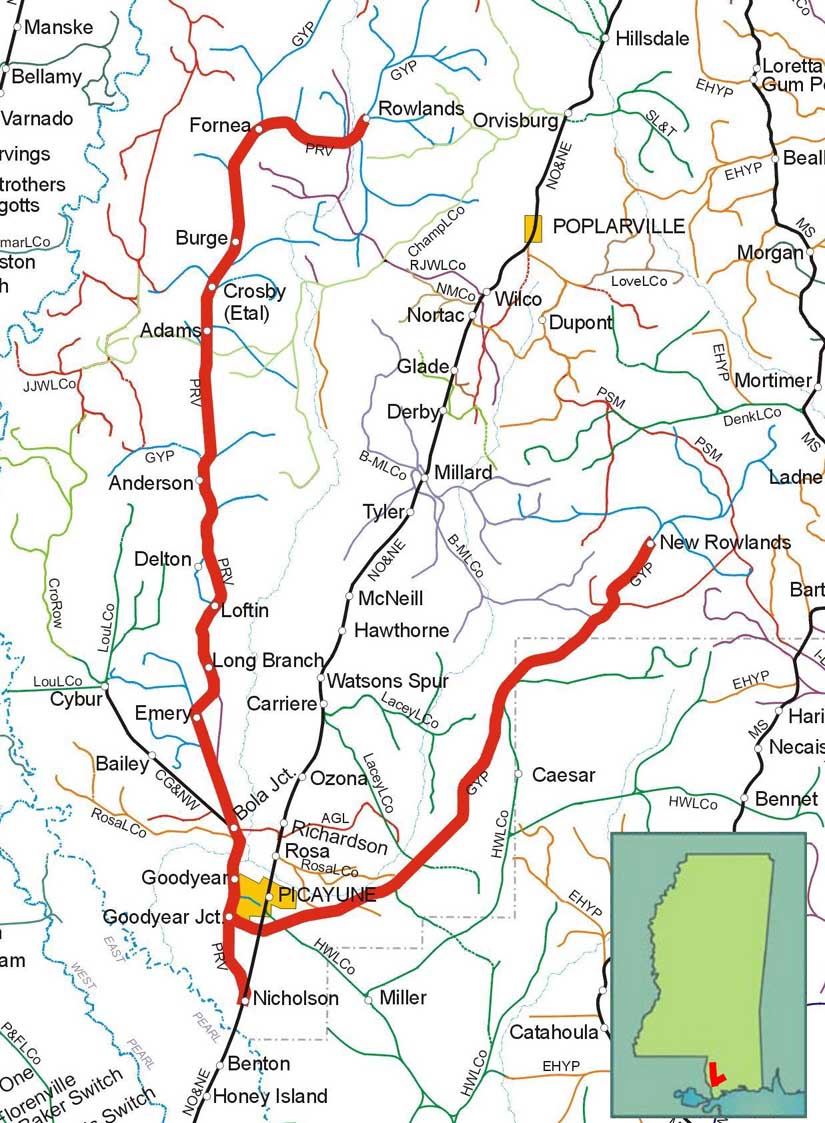
PRV route map / Mississippi Rails
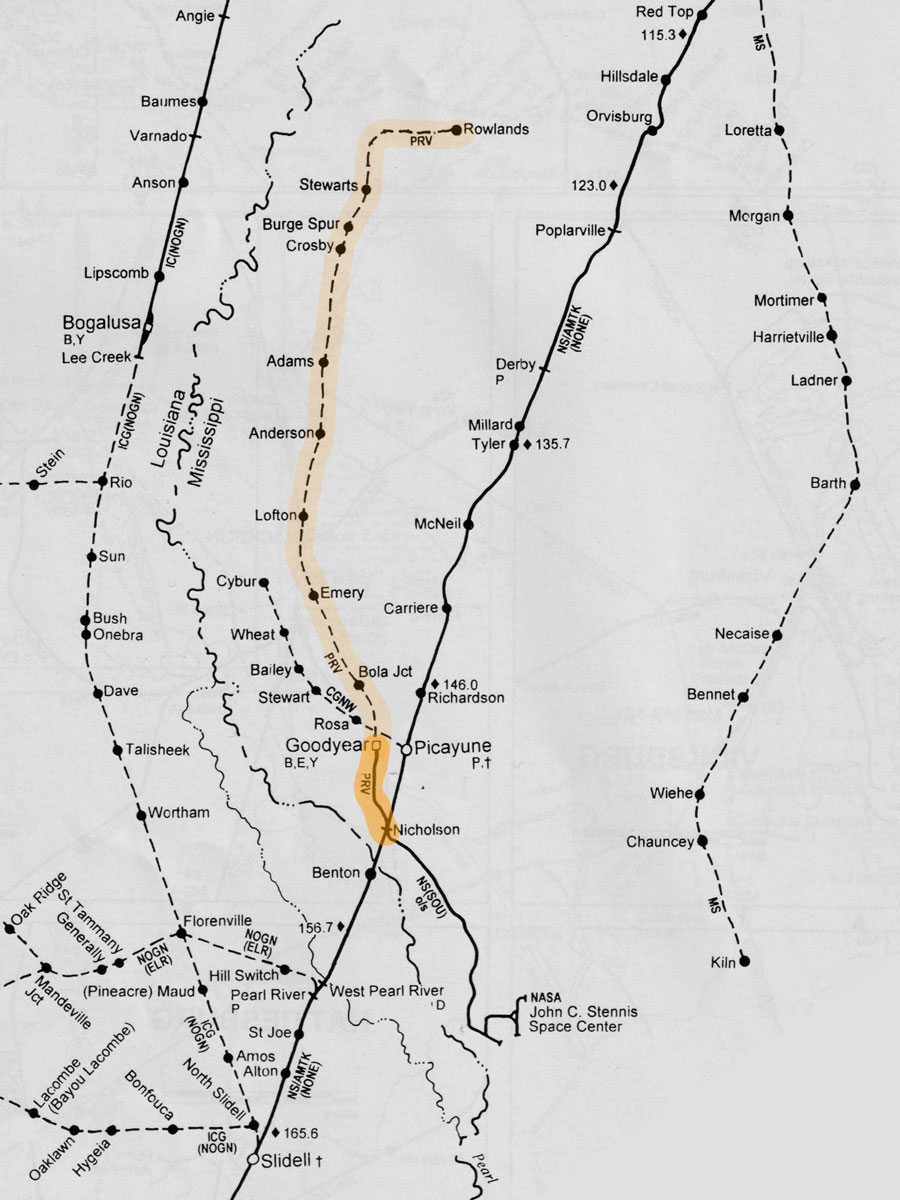
PRV route map / RWH
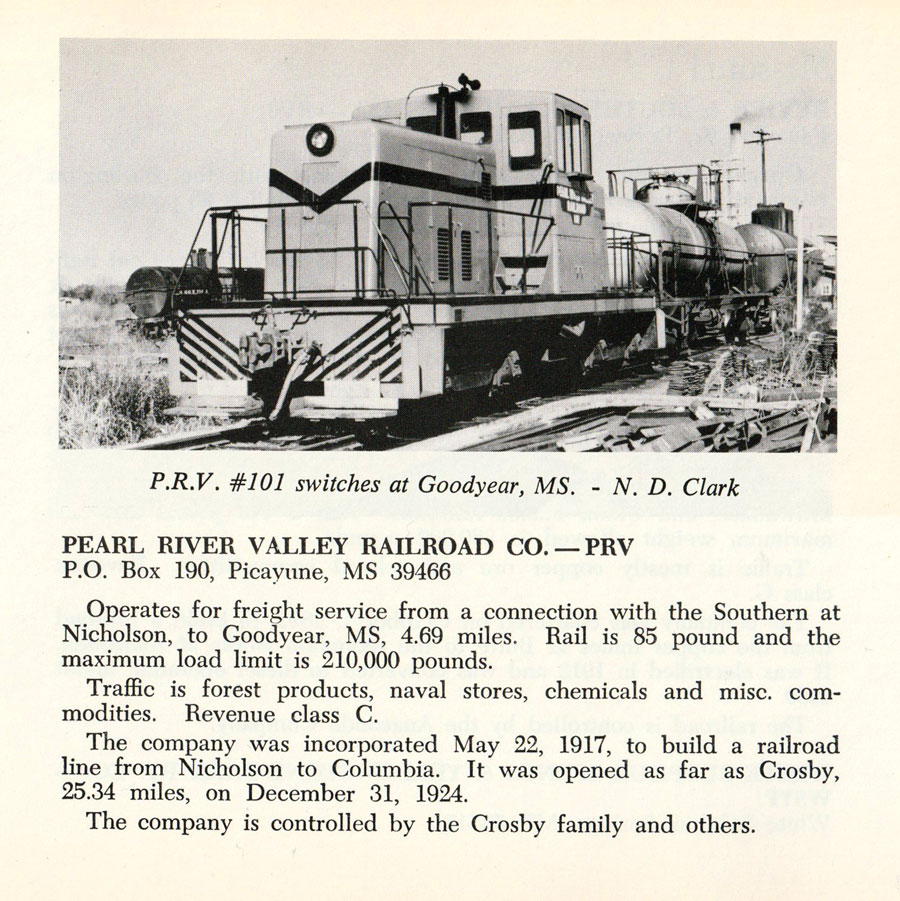
from American Short Line Railway Guide
by Edward A. Lewis - 1975 / collection
Publications
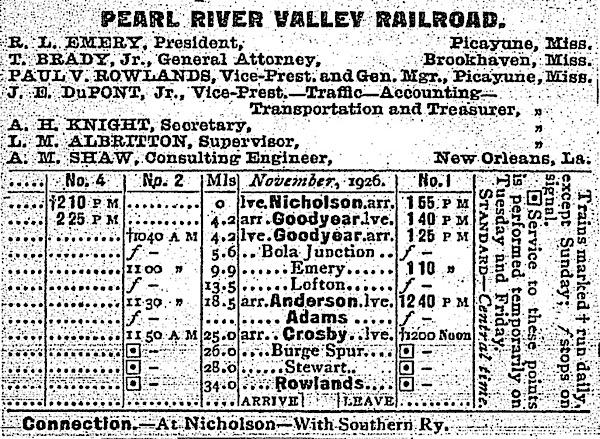
1926 Official Guide ad / collection
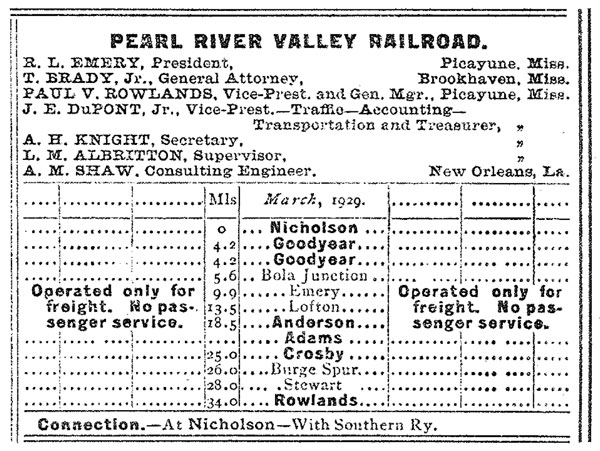
1930 Official Guide ad / collection
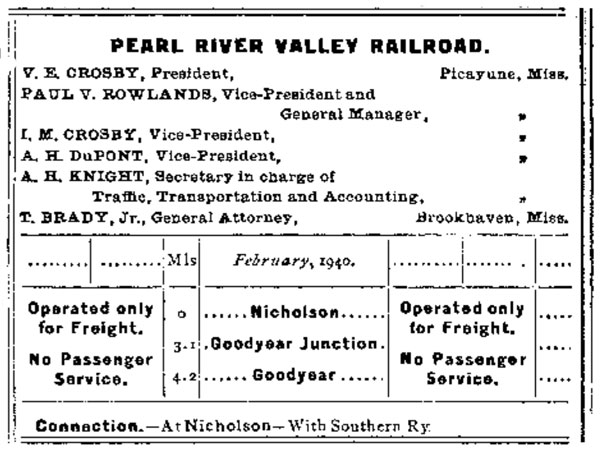
1940 Official Guide ad / collection
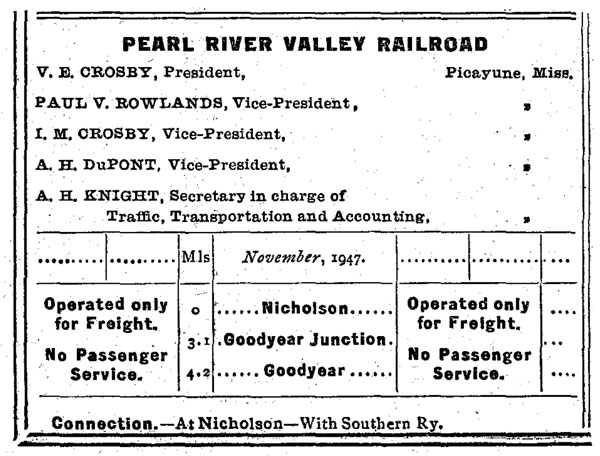
1948 Official Guide ad / collection
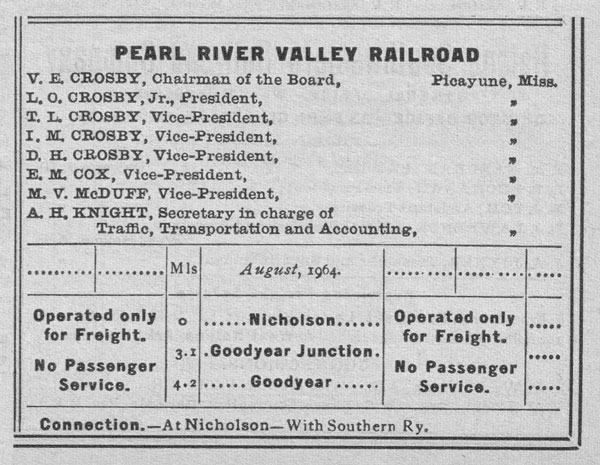
1965 Official Guide ad / collection

1974 Official Guide ad / collection

1988 Official Guide ad / collection
Motive Power
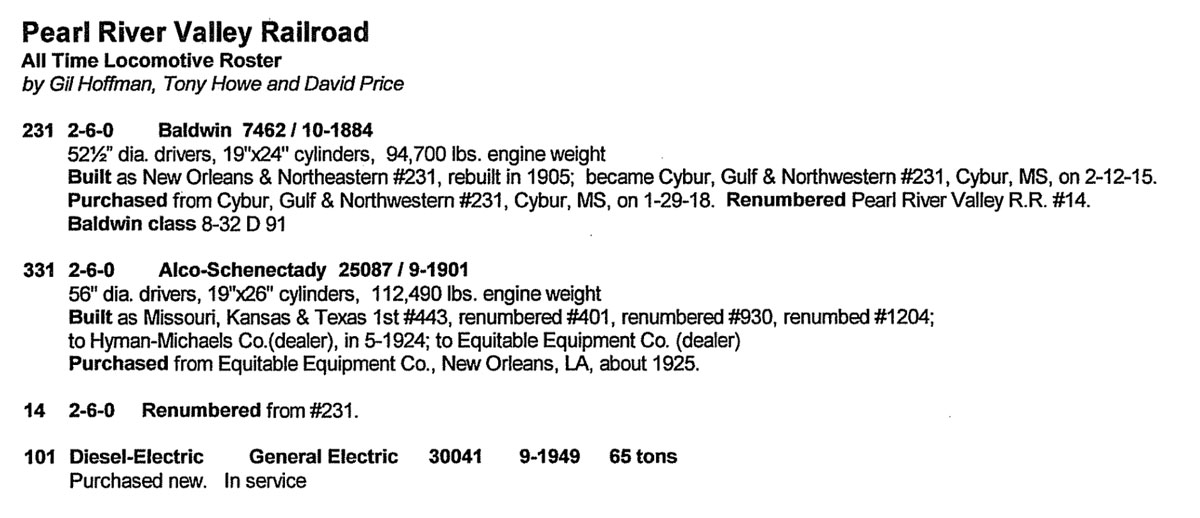
from The Sandhouse NRHS newsletter - Jan 2001 / collection
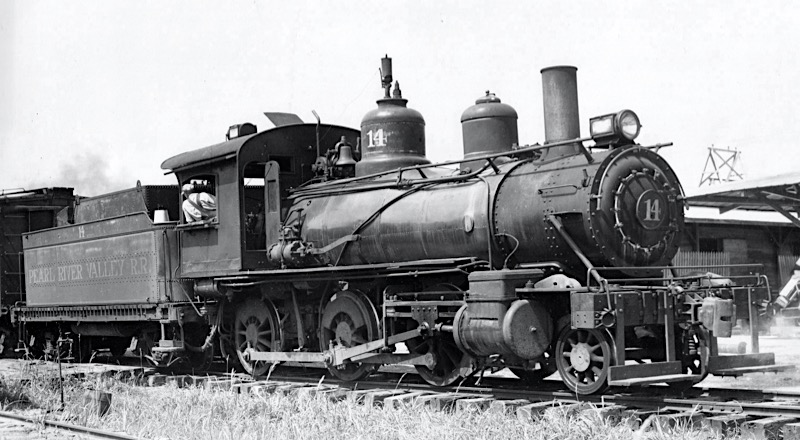
Pearl River Valley #14
collection


Pearl River Valley #14
to Cybur Gulf & Northwestern #231
to Pearl River Valley #231
to Pearl River Valley #14
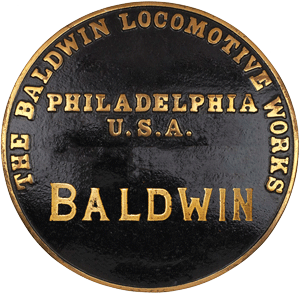
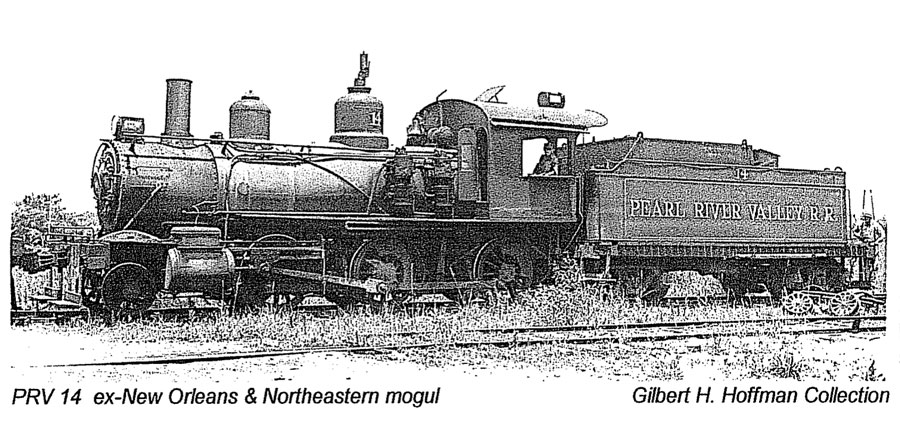
from The Sandhouse NRHS newsletter - Jan 2001 / collection
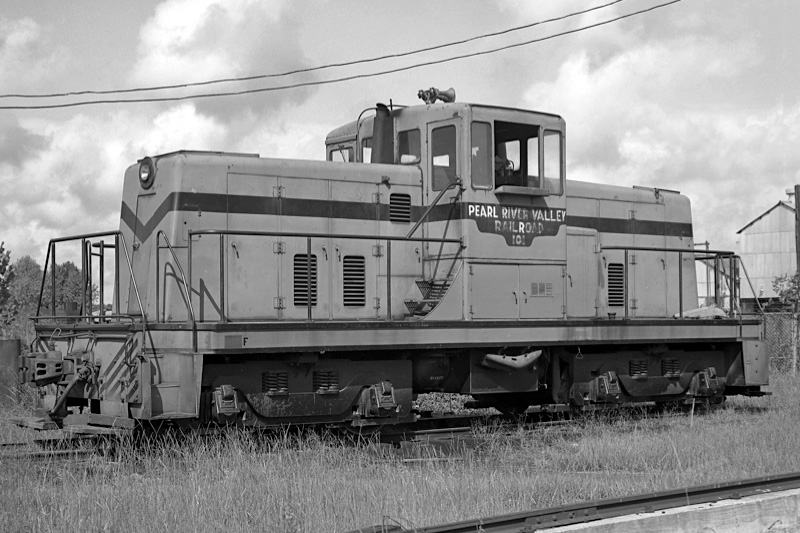
Pearl River Valley #101
Picayune, Ms / 1972 / collection


Pearl River Valley #101
operated until line abandoned
abandoned in place, Goodyear MS
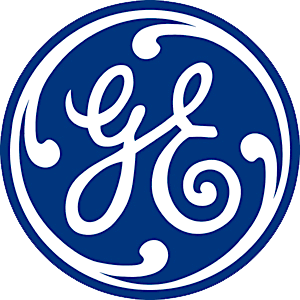
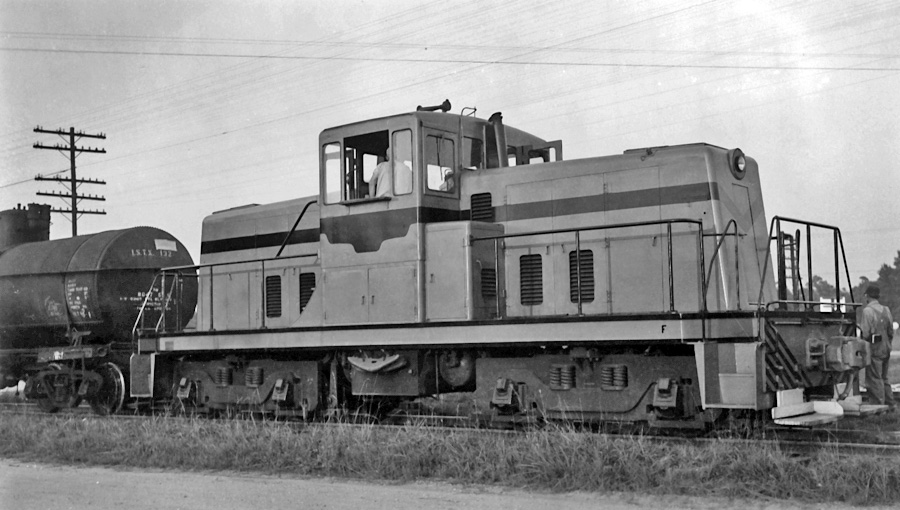
Nicholson, Ms / Aug 1958 / collection
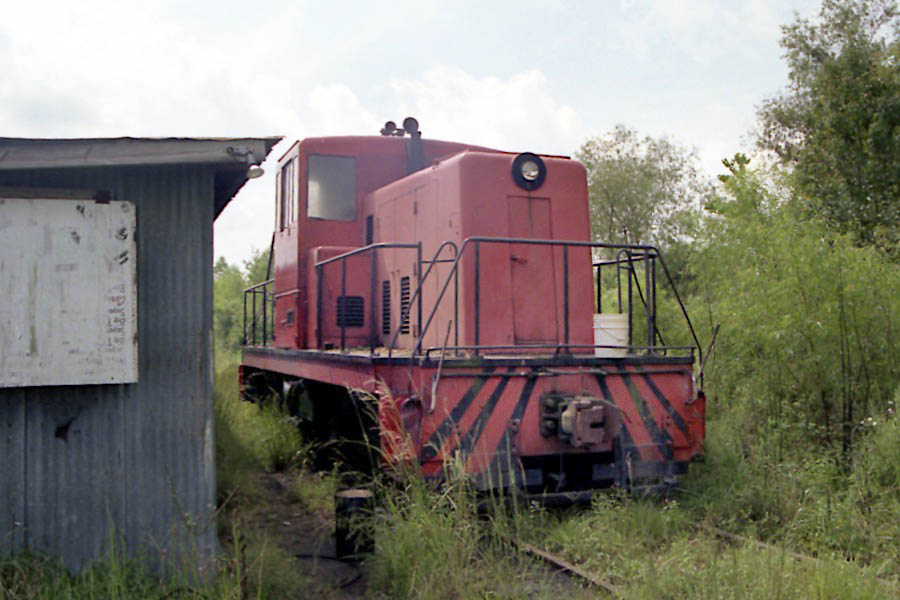
Picayune, Ms / Sep 1988 / JCH
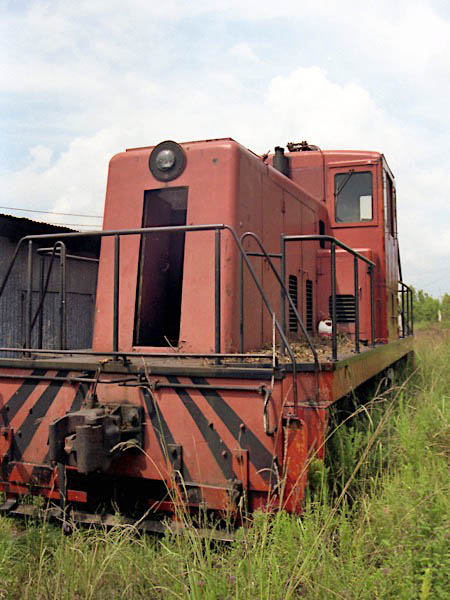
Sep 1988 / JCH
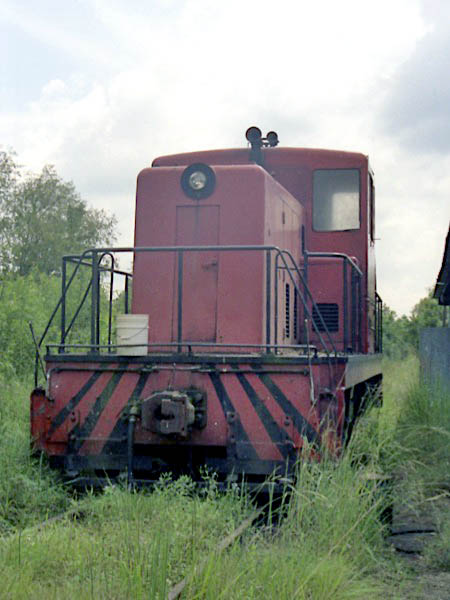
Sep 1988 / JCH
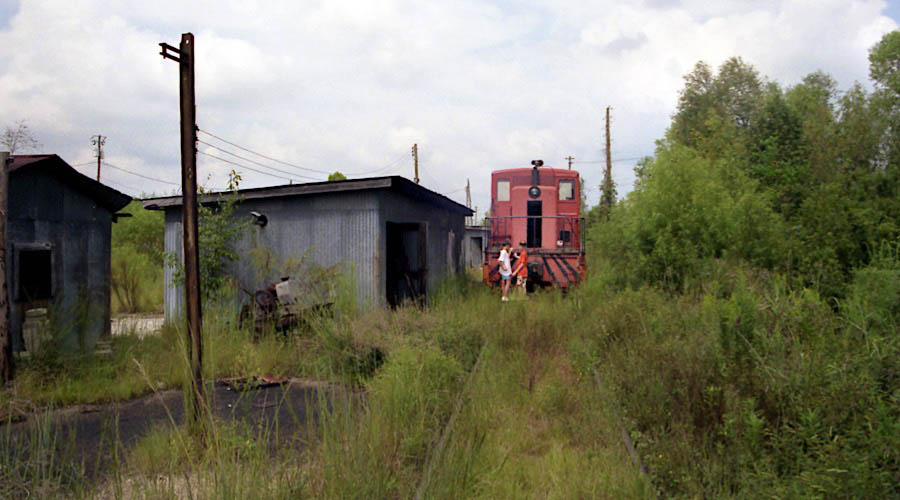
Picayune, Ms / Sep 1988 / JCH

Click to see the former Pearl River Valley servicing area plotted on a Google Maps page

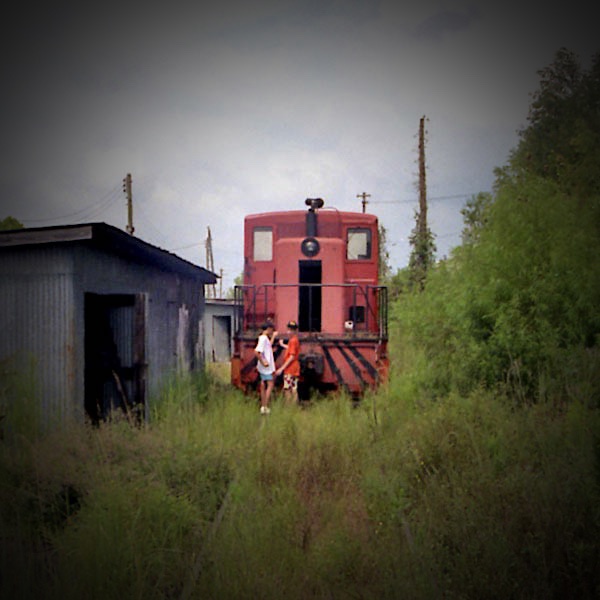 The diminutive Pearl River Valley existed throughout my childhood less than an hour from my home, yet I only made one trip with dad to see their veteran 65 tonner GE. One Saturday, we set out with my childhood friend Jay K. to find the line ... only to wind up spending an hour crawling all over the parked locomtive in Goodyear, Mississippi. It was sitting idle for the weekend in what I know now is a classic Deep South shortline servicing area: a broken-down siding with grass as high as the running boards. I remember my dad pointing out just how clean the running gear of the little loco appeared. "That's one advantage of never clearing the right of way," he joked. When you consider that the PRV purchased their centercab new from General Electric way back in 1949, I think you could say the forces in Goodyear got their moneys worth. I had thought the PRV had been abandoned years ago, but roster shots of #101 as late as 2007 can be found on the Internet.
The diminutive Pearl River Valley existed throughout my childhood less than an hour from my home, yet I only made one trip with dad to see their veteran 65 tonner GE. One Saturday, we set out with my childhood friend Jay K. to find the line ... only to wind up spending an hour crawling all over the parked locomtive in Goodyear, Mississippi. It was sitting idle for the weekend in what I know now is a classic Deep South shortline servicing area: a broken-down siding with grass as high as the running boards. I remember my dad pointing out just how clean the running gear of the little loco appeared. "That's one advantage of never clearing the right of way," he joked. When you consider that the PRV purchased their centercab new from General Electric way back in 1949, I think you could say the forces in Goodyear got their moneys worth. I had thought the PRV had been abandoned years ago, but roster shots of #101 as late as 2007 can be found on the Internet.
Locations
HawkinsRails is honored to feature here the writing and photography of our late friend and Mississippi railfan James Christopher

 Nicholson
Nicholson
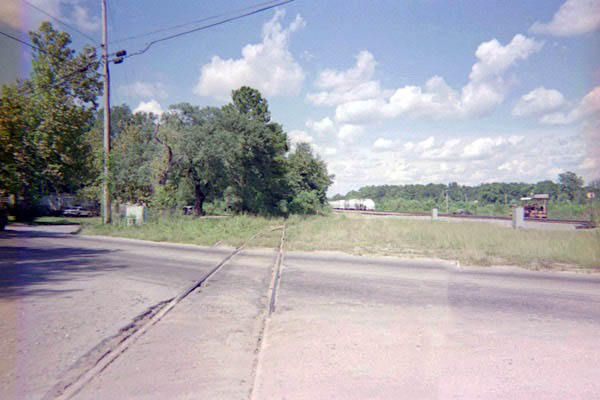
Nicholson, Ms / circa 2000 / James Christopher

Click to see the former PRV interchange with Southern Rwy plotted on a Google Maps page
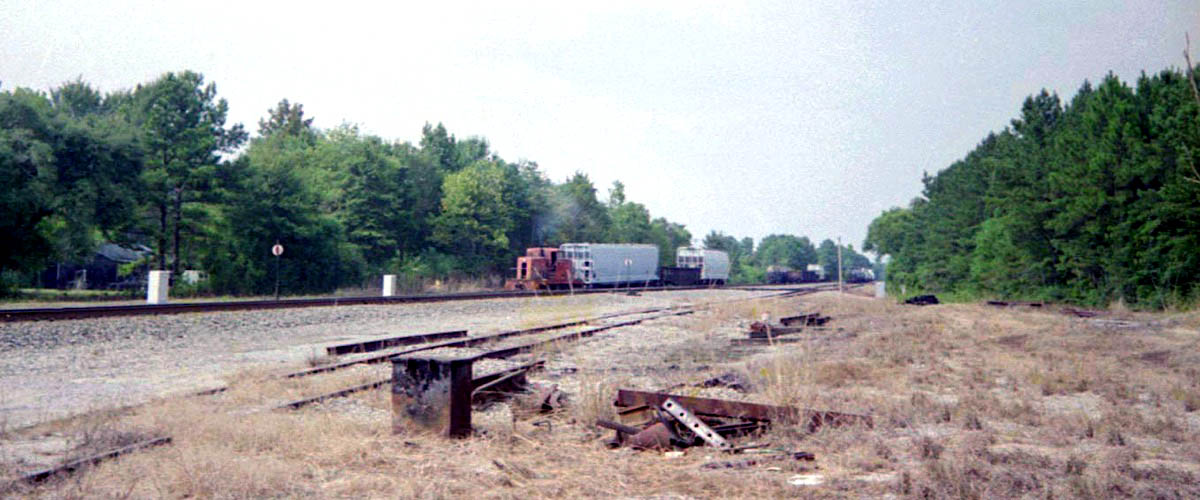
Nicholson, Ms / circa 2000 / James Christopher
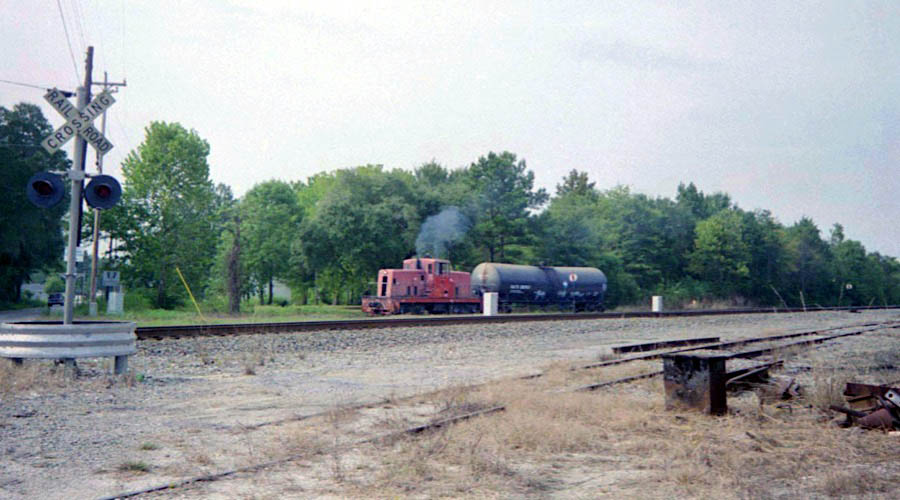
Nicholson, Ms / circa 2000 / James Christopher
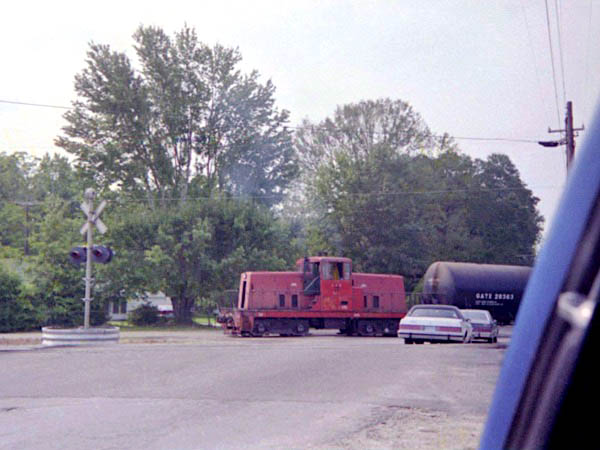
Nicholson, Ms / circa 2000 / James Christopher
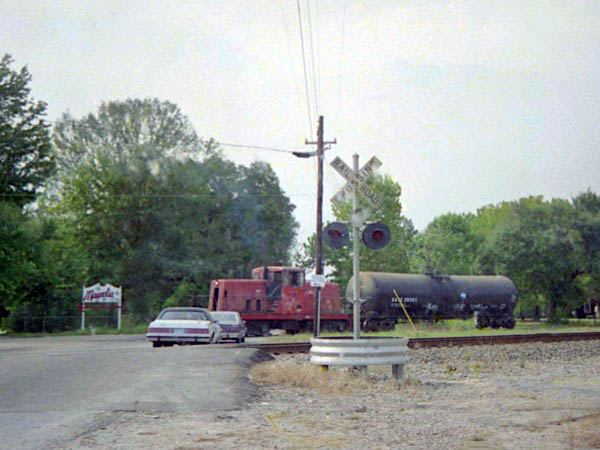
Nicholson, Ms / circa 2000 / James Christopher
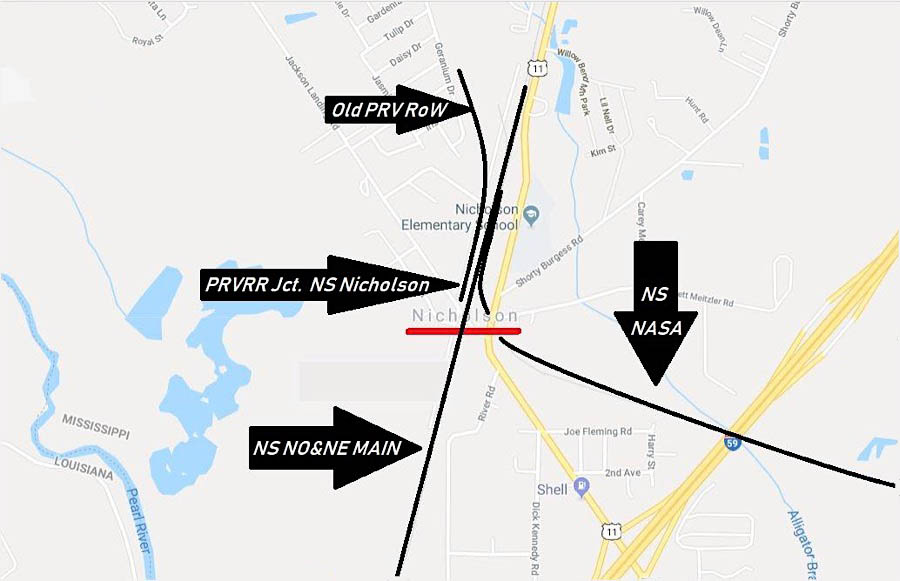
Nicholson interchange map / Gary Herring
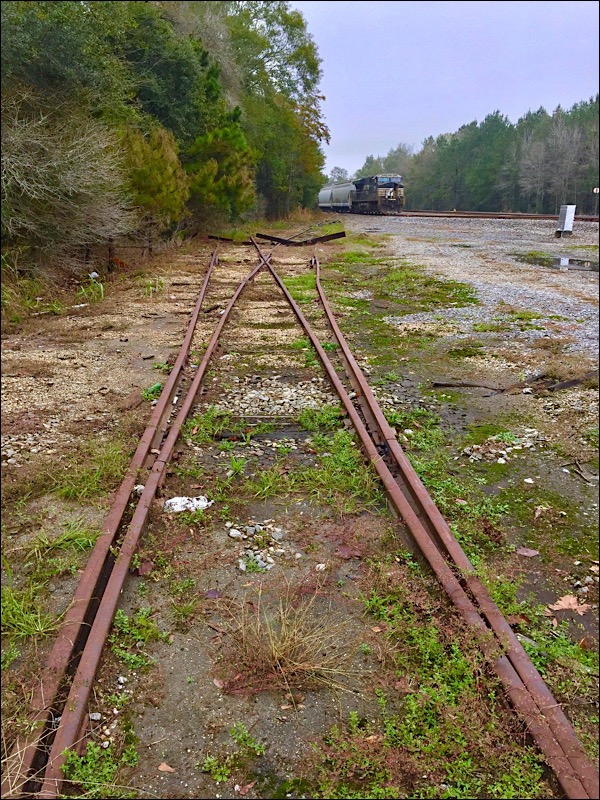
Nicholson, Ms / Nov 2018 / Gary Herring
 Goodyear
Goodyear
Goodyear is an unincorporated community within the western city limits of Picayune, Mississippi. It was the base of operations for the Pearl River Valley Railroad because it was the location of several affiliated industries that made use of freight service in the latter half of the 20th century.
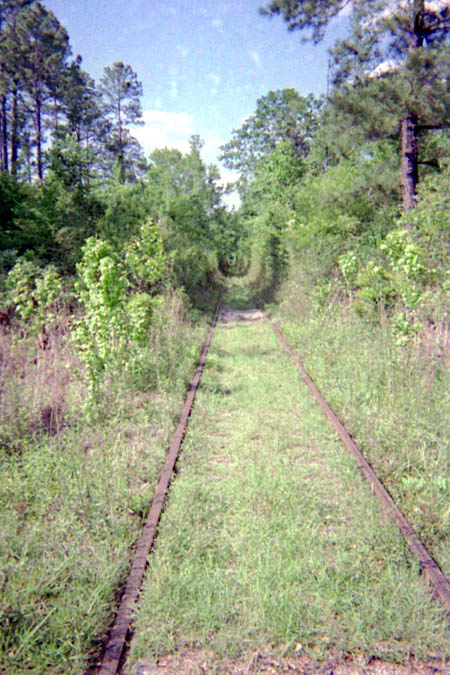
circa 2000 / James Christopher
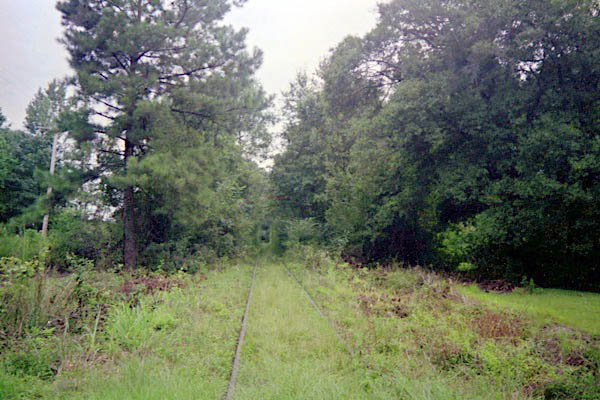
Picayune, Ms / circa 2000 / James Christopher
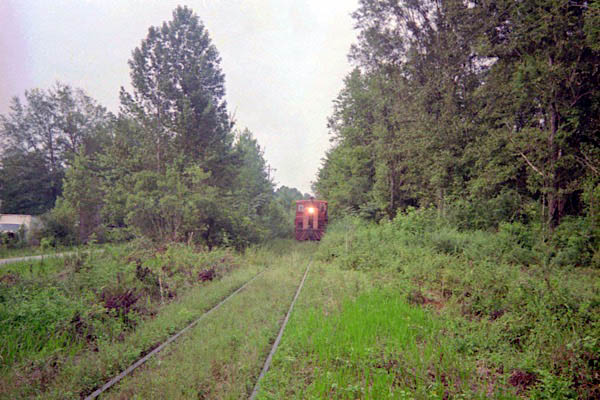
Picayune, Ms / circa 2000 / James Christopher
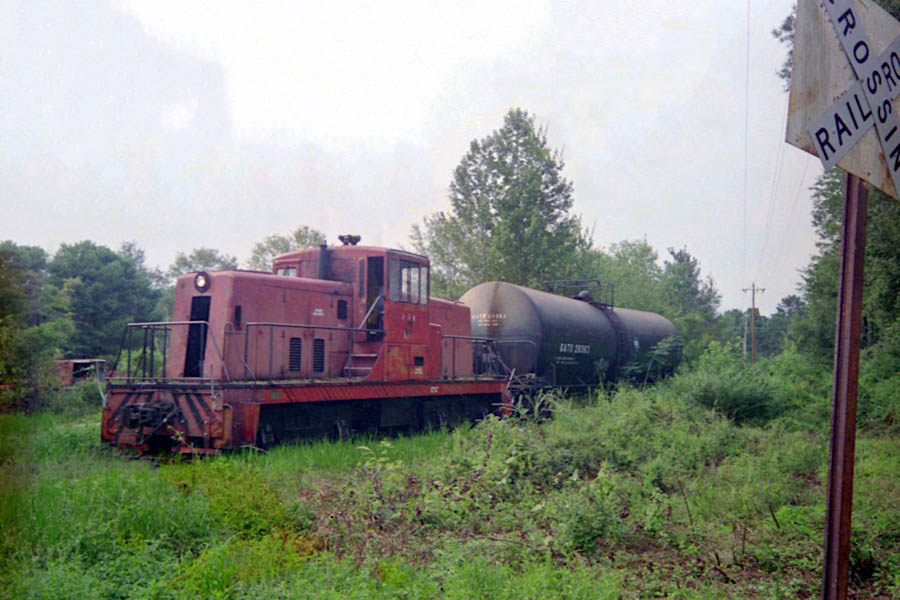
Picayune, Ms / circa 2000 / James Christopher
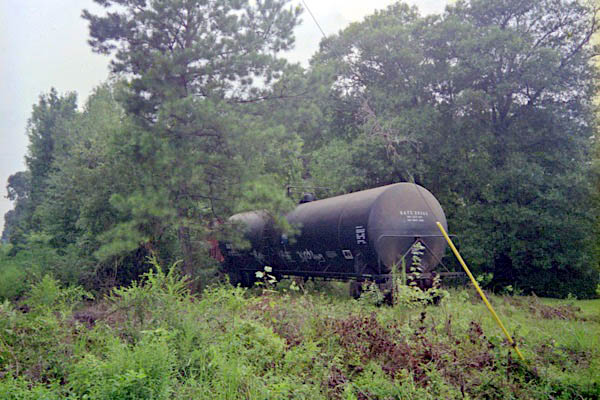
Picayune, Ms / circa 2000 / James Christopher
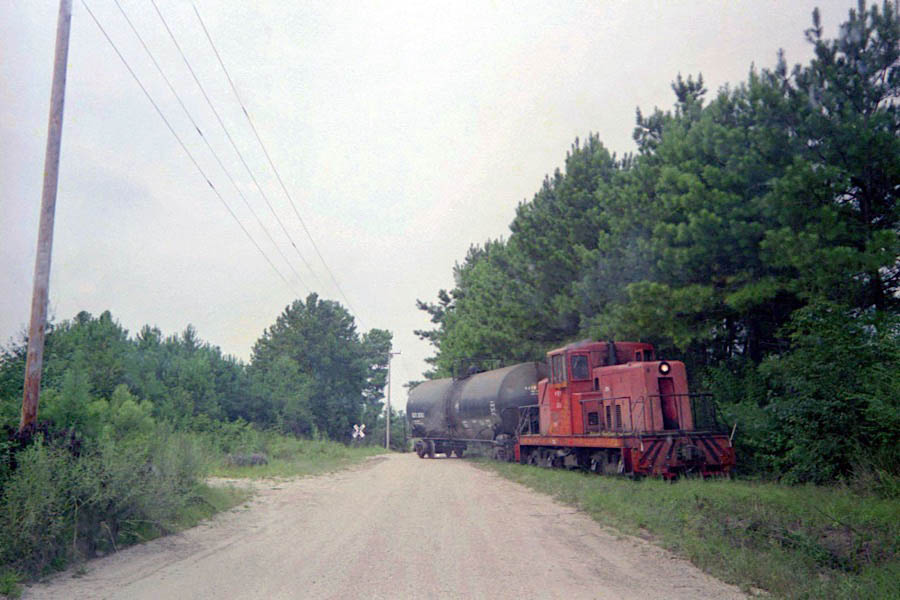
Picayune, Ms / circa 2000 / James Christopher
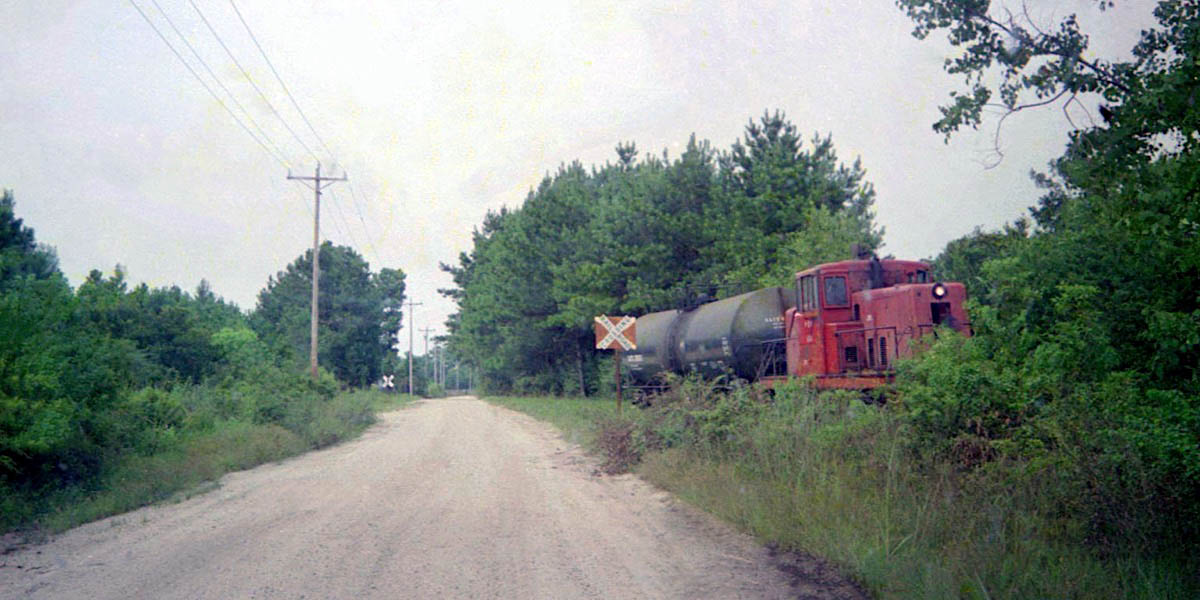
Picayune, Ms / circa 2000 / James Christopher
 Article
Article
The Pearl River Valley Railroad
James Christopher - January 2001
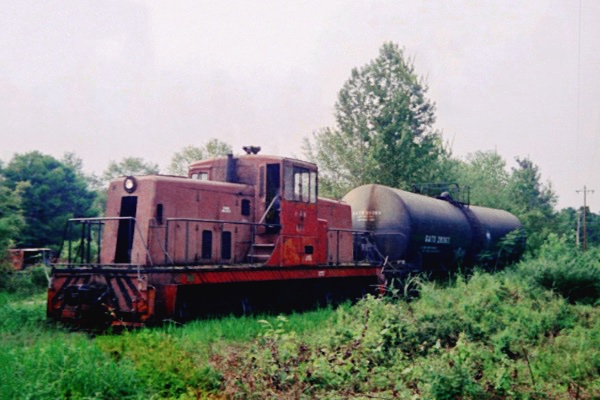 The Pearl River Valley (PRV) today is a 4-mile shortline running between its Norfolk Southern interchange at Nicholson and Goodyear (Picayune), Mississippi, and the International Paper Company plant. The line, however, is now only a fraction of its former self which once served the lumber industry in this region of Southern Mississippi. The line is barely a railroad; it is more like a nature trail with rails and, unless one is aware that the PRV is there, most folks — including railfans -- pass the Nicholson/Picayune area without ever seeing it. The right-of-way resembles one of those old interurban or streetcar lines of yesteryear which is barely holding on and suffering from neglect. You may not find the PRV on many railroad maps, and some maps that do show it misidentify it with the Norfolk Southern's little-used NASA Stennis Space Center branch. The Pearl River Valley Railroad could be classified as "old, rare, and obscure."
The Pearl River Valley (PRV) today is a 4-mile shortline running between its Norfolk Southern interchange at Nicholson and Goodyear (Picayune), Mississippi, and the International Paper Company plant. The line, however, is now only a fraction of its former self which once served the lumber industry in this region of Southern Mississippi. The line is barely a railroad; it is more like a nature trail with rails and, unless one is aware that the PRV is there, most folks — including railfans -- pass the Nicholson/Picayune area without ever seeing it. The right-of-way resembles one of those old interurban or streetcar lines of yesteryear which is barely holding on and suffering from neglect. You may not find the PRV on many railroad maps, and some maps that do show it misidentify it with the Norfolk Southern's little-used NASA Stennis Space Center branch. The Pearl River Valley Railroad could be classified as "old, rare, and obscure."
Nonetheless, the Pearl River Valley's little orange GE 65-tonner is cranked up once or twice a week, and the crew works its way down from Arizona Chemical, an International Paper Corporation plant (99.9% of PRV's business), to the NS interchange at Nicholson. The train moves at a snail's pace, cutting fresh flangeways in the crossings and weeds as it goes. There is no run-around track or turning facility at either end of the line, so the 65-tonner pulls its usual consist of one tank car about 10 mph, with the crew flagging the few "quiet" grade crossings on down to Nicholson. At Nicholson, the train pulls across the main road — no signals or crossbucks here — to clear the points of the interchange track connection. Reversing, the engine shoves its charge into the small Norfolk Southern yard. If there is a tank car to be picked up at Nicholson, the crew sorts it out in the yard with much grunting of the little 65-tonner. Then the whole process is reversed, this time with the locomotive shoving the car the length of the line back to Arizona Chemical. On a rare, rare occasion, the 65-tonner has shoved a gondola up to a customer about a half-mile or so before Arizona Chemical, and possibly also a covered hopper from time to time. Most of the time, though, the little GE sleeps away in its spur inside the Arizona Chemical fence.
In times past, the Pearl River Valley was a more substantial railroad which was built to harvest timber from Pearl River County. Much logging took place in the area northwest of Poplarville, Mississippi, and feeder lines reached these timber stands. The line was originally incorporated to construct its own right-of-way from Nicholson to Columbia in 1917, a distance of about 50 miles. But the PRV only ended up being about 34 miles in length, with several of these miles being trackage rights over logging lines of the parent companies — including the Crosby & Rowlands company and Goodyear Yellow Pine, The Cybur Lumber Company, which was acquired by the larger companies, also operated a common carrier, the Cybur, Gulf & Northwestern Railroad, which became part of the PRV. Built for logging and tapline purposes, the Pearl River Valley Railroad was abandoned in segments as the timbered areas were cut out. The segment north of Goodyear was removed in 1938. Today, the PRV's only remaining segment is the 4-mile line from Nicholson (Jct.) to Goodyear. It is amazing that this shortline has PRV 14 ex-New Orleans & Northeastern mogul survived ... but only barely ... into the 21st century.
Even though the Pearl River Valley Railroad never reached its chartered goal of Columbia, Mississippi, it did at one time or another reach such locales as Emory (about 10 miles from Nicholson), Dolton (about 15 miles), Anderson (17.3 miles and the site of a major logging camp), and Easley and Crosby (about 25 miles from Nicholson). Through trackage rights on the Goodyear Yellow Pine Company's logging railroad, the PRV reached Rowlands, location of a major log camp, about 9 miles north of Crosby. When this area was cut out, Goodyear Yellow Pine in 1938 constructed another line northeast from Picayune 22.5 miles to New Camp Rowlands. The PRV obtained trackage rights over this line and provided common carrier service over this new line until this area also was finally logged out. There are still a few trace visible of these routes in the form of cuts and fills which the practiced eye can easily identify.
In its history, the Pearl River Valley roster included only two steam locomotives of its own. The two-truck Shay locomotive on display in Picayune today was property of one of the parent companies of the PRV. The little GE diesel was purchased new and has been the sole motive power of the line ever since. The 65-tonner has always worn an orange with black or white trim paint scheme. Many other locomotives, both Shays and rod engines, at one time operated over PRV rails on business of the parent lumber companies.
For many years the Pearl River Valley has continued to operate in a state of repair bespeaking near abandonment. But it continues to serve its purpose efficiently and well ... if very, very slowly. But, what is speed when the distance to be traveled is only four miles? If you like little railroads, buy yourself a Barq's root beer and a Moon Pie, and make your visit to the Pearl River Valley Railroad.
The Sandhouse NRHS newsletter - Jan 2001 / collection
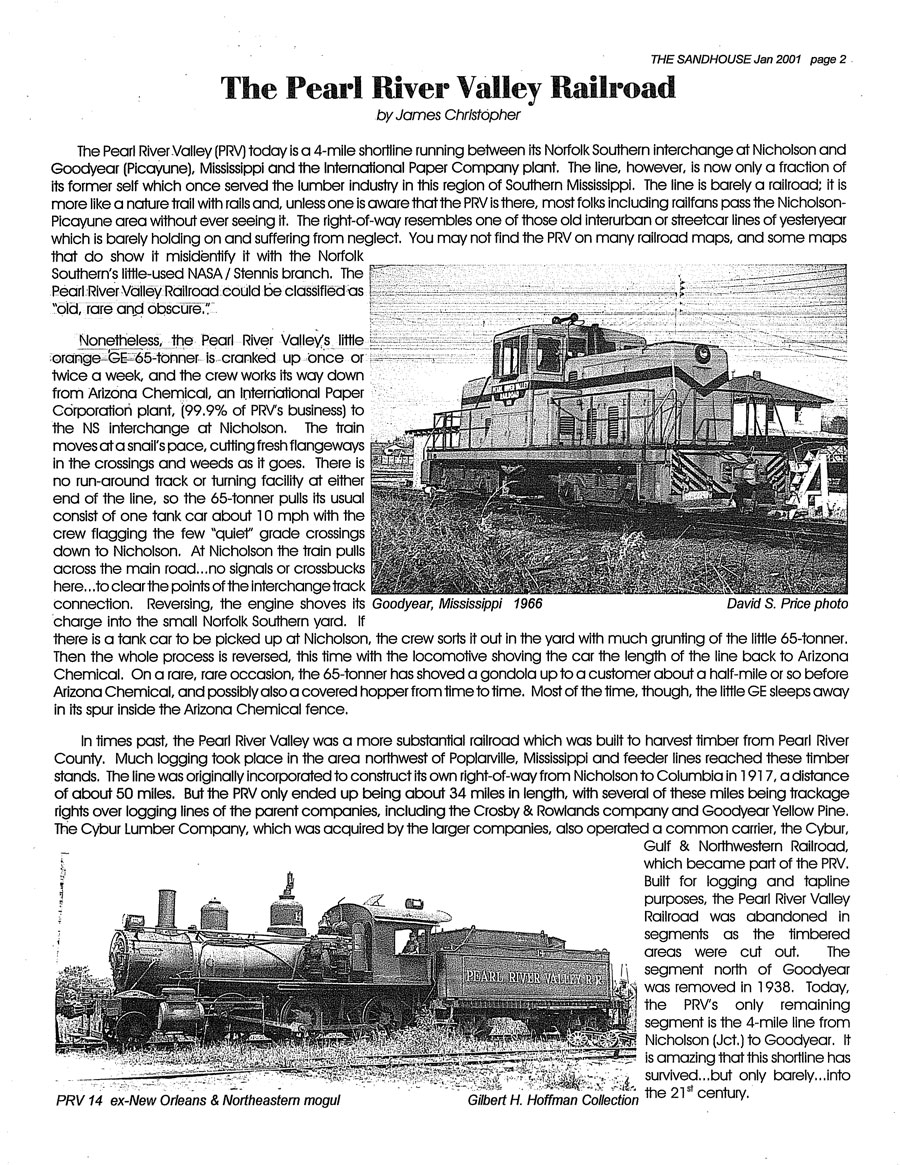
from The Sandhouse NRHS newsletter - Jan 2001 / collection
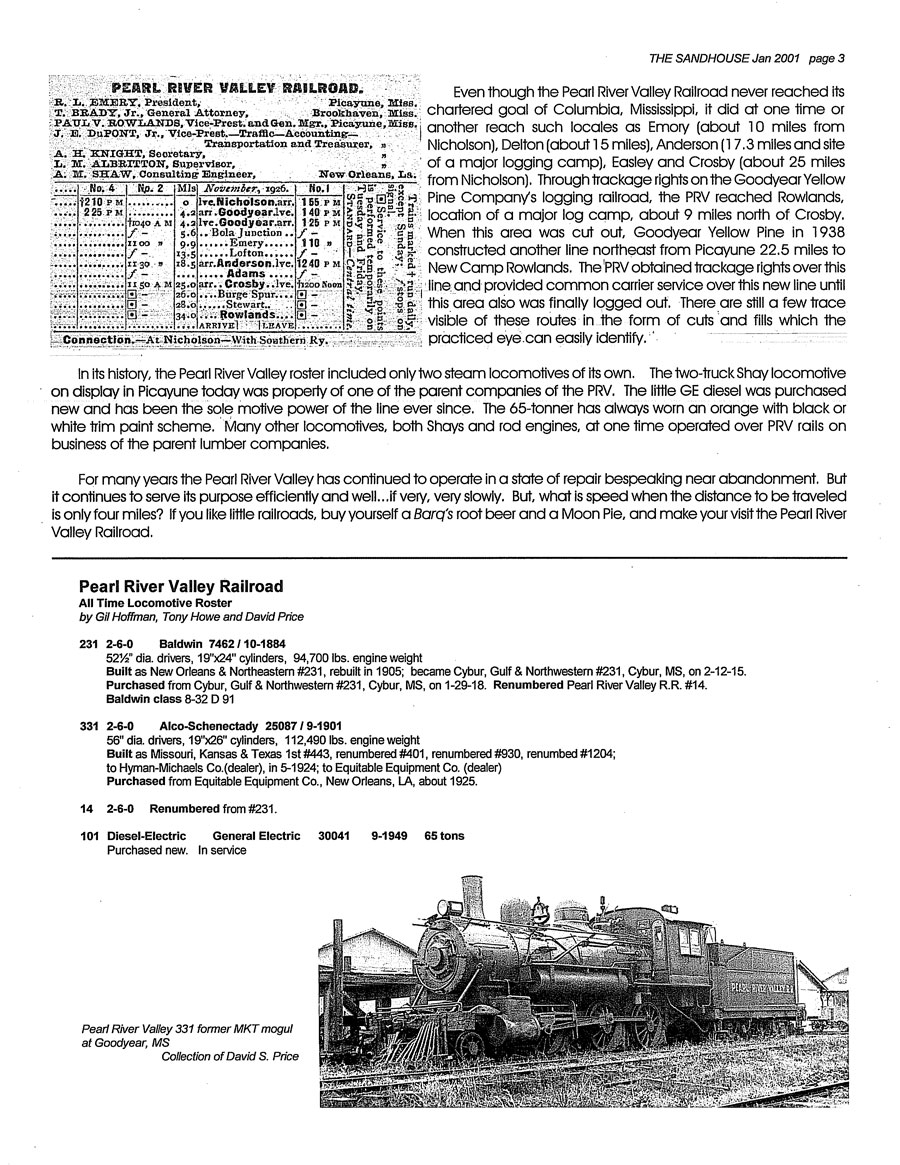
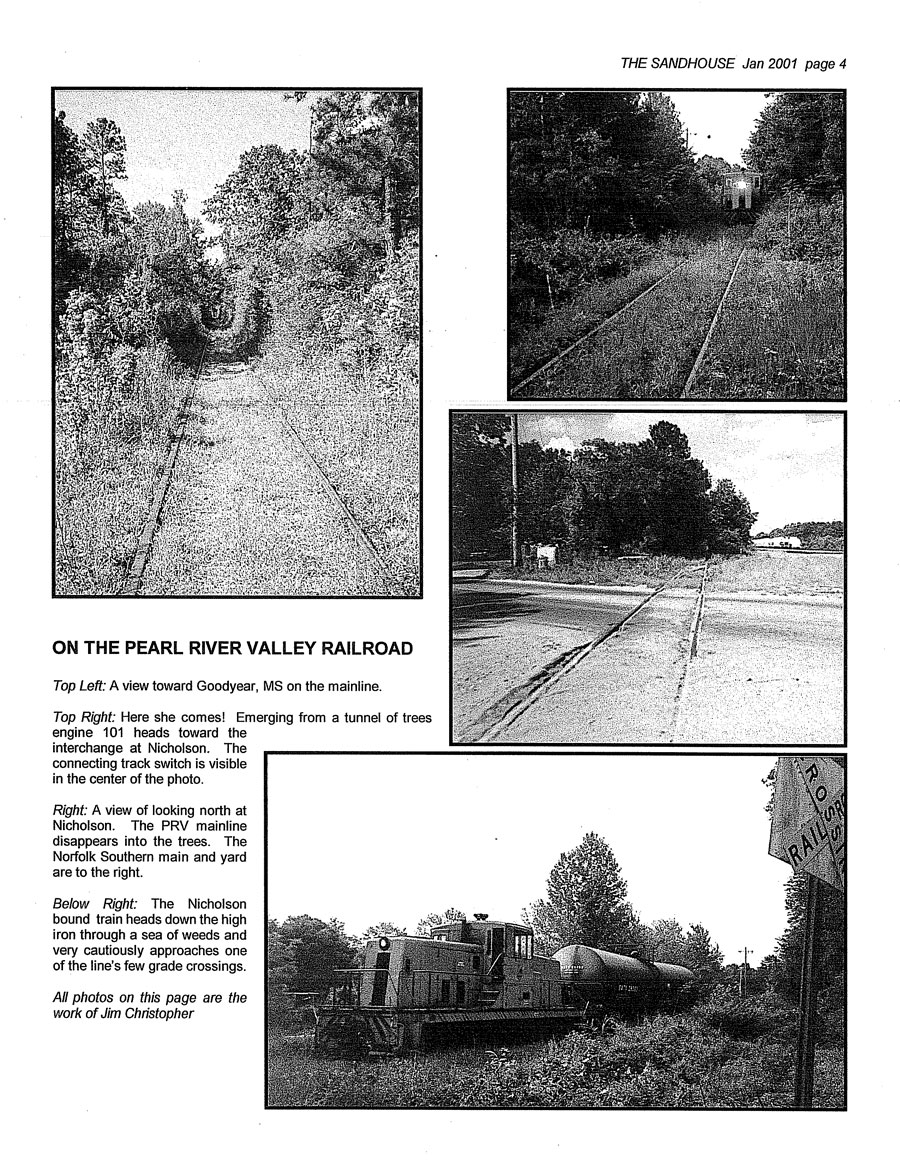
 Company Office
Company Office
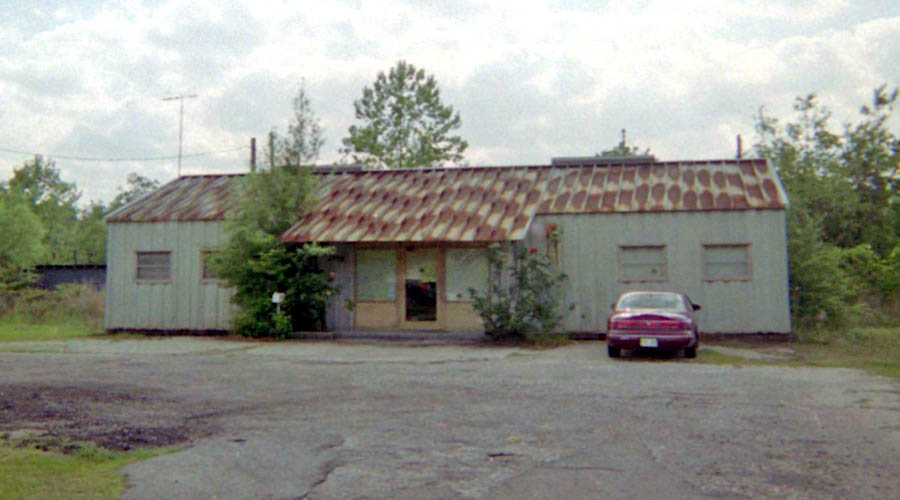
Picayune, Ms / circa 2000 / James Christopher

Click to see location of the former PRV company office plotted on a Google Maps page
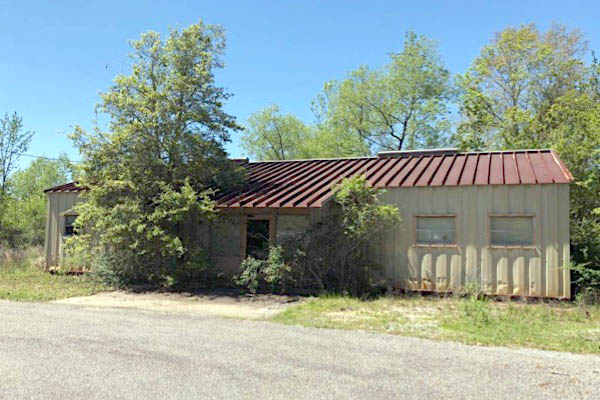
Picayune, Ms / Nov 2018 / Rodney Pearson
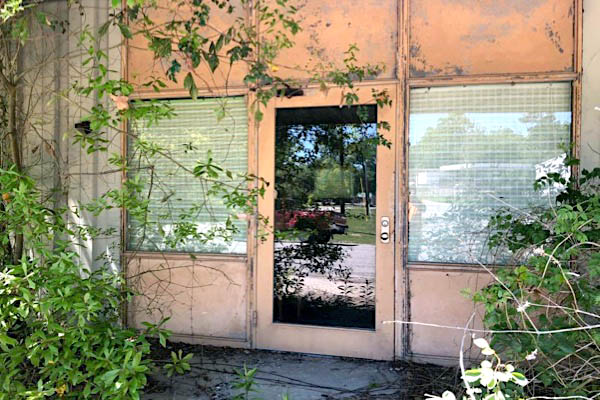
Picayune, Ms / Nov 2018 / Rodney Pearson
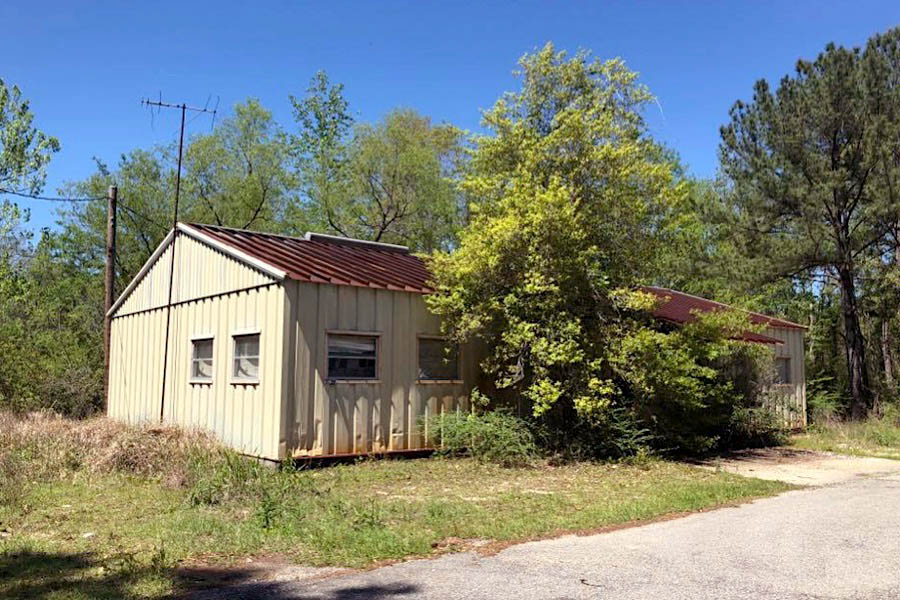
Picayune, Ms / Nov 2018 / Rodney Pearson
For many years, the Pearl River Valley Railroad maintained a company office in the village of Goodyear, adjacent to the railroad right of way. In 2019, the abandoned building was demolished by the City of Picayune to make way for a new fire station. As of 2022, the PRV #101 remains abandoned in place to the immediate southwest of the fire station.
HawkinsRails thanks railfan Rodney Pearson for use of his Pearl River Valley office photos

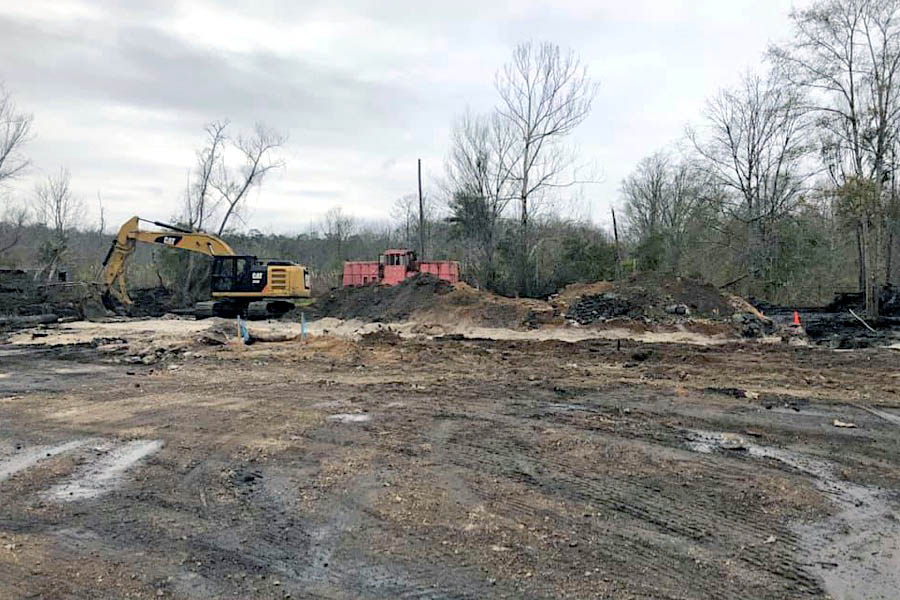
Picayune, Ms / Jan 2019 / Rodney Pearson
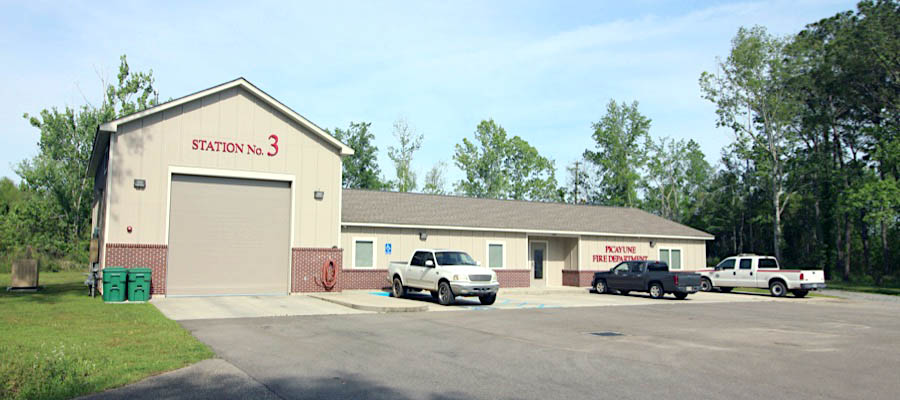
Picayune, Ms / Apr 2022 / RWH
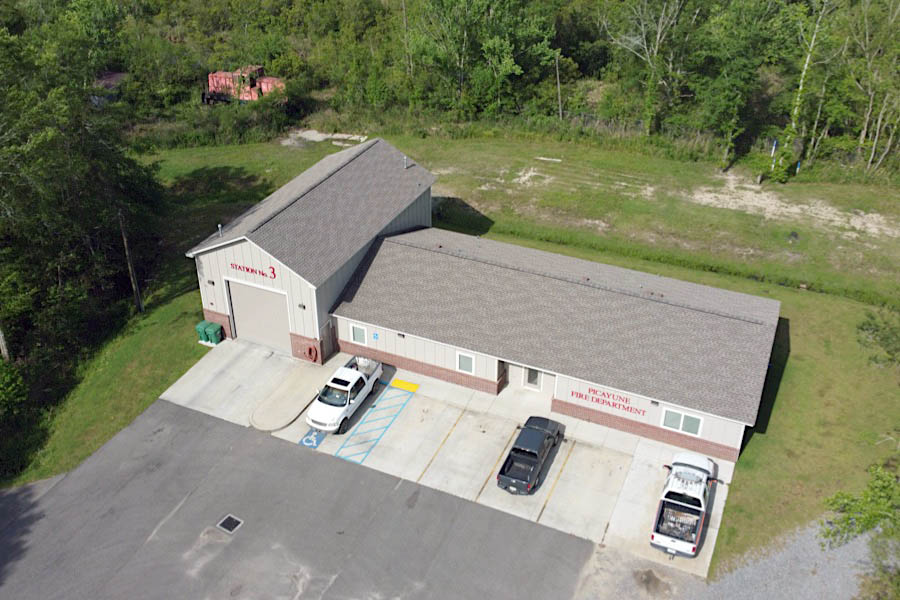
Picayune, Ms / Apr 2022 / RWH
 Abandoned in Place
Abandoned in Place
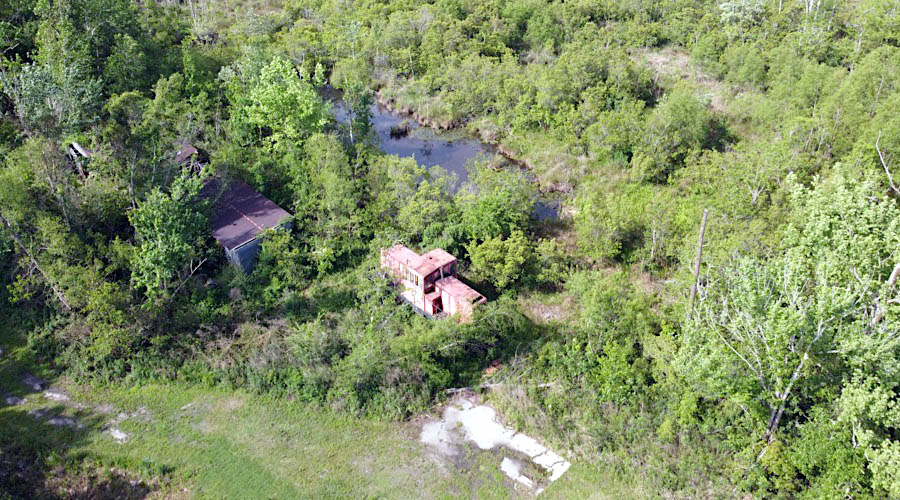
Picayune, Ms / Apr 2022 / RWH

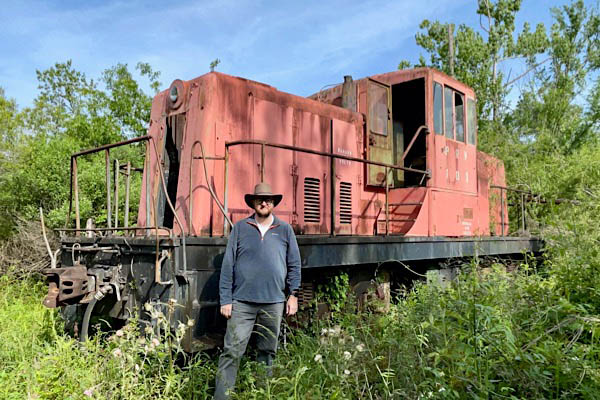 I keep a long list of locomotives, lines, and locations I need to visit and document. My old friend Pearl River Valley #101 has been on my "Mississippi" list for a few years now, ever since the railfan community on social media alerted me to the fact that she had not been scrapped — as I would have assumed, given the demise of the shortline — but was, in fact, abandoned in place in Goodyear. Apparently there has been talk about relocating and maybe restoring her, but clearly nothing has happened yet to save her from further decay. On a recent safari through southern Mississippi, I landed in Picayune early on a weekday morning. I found the new fire station that now sits where the PRV office stood, and — sure enough — discovered old 101 put out to pasture. In some ways, her setting has not changed much since the last time I saw her ... almost 35 years ago! Overgrown right of way and faded orange paint. I guess credit goes to the boys in Erie, Pennsylvania, who almost 75 years ago outshopped this stout 65-tonner that she has not completely rusted away out in the open. She's made of sturdy stuff. In fact, she could still be cosmetically saved ... despite some vandalism in the cab and hood elements missing. That'll have to be someone else's project. Long live the General Electric centercab, unsung workhorse of North American railroading.
I keep a long list of locomotives, lines, and locations I need to visit and document. My old friend Pearl River Valley #101 has been on my "Mississippi" list for a few years now, ever since the railfan community on social media alerted me to the fact that she had not been scrapped — as I would have assumed, given the demise of the shortline — but was, in fact, abandoned in place in Goodyear. Apparently there has been talk about relocating and maybe restoring her, but clearly nothing has happened yet to save her from further decay. On a recent safari through southern Mississippi, I landed in Picayune early on a weekday morning. I found the new fire station that now sits where the PRV office stood, and — sure enough — discovered old 101 put out to pasture. In some ways, her setting has not changed much since the last time I saw her ... almost 35 years ago! Overgrown right of way and faded orange paint. I guess credit goes to the boys in Erie, Pennsylvania, who almost 75 years ago outshopped this stout 65-tonner that she has not completely rusted away out in the open. She's made of sturdy stuff. In fact, she could still be cosmetically saved ... despite some vandalism in the cab and hood elements missing. That'll have to be someone else's project. Long live the General Electric centercab, unsung workhorse of North American railroading.
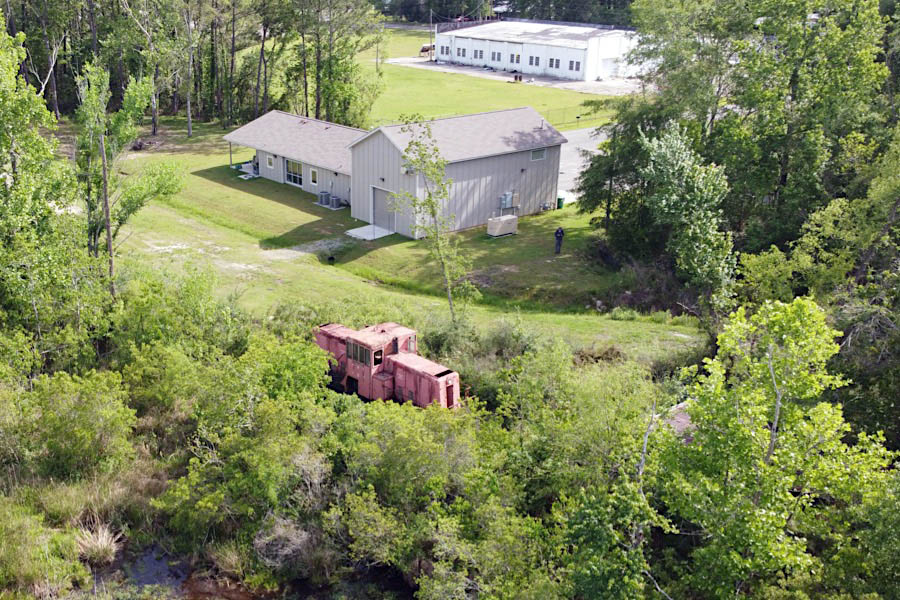
Picayune, Ms / Apr 2022 / RWH
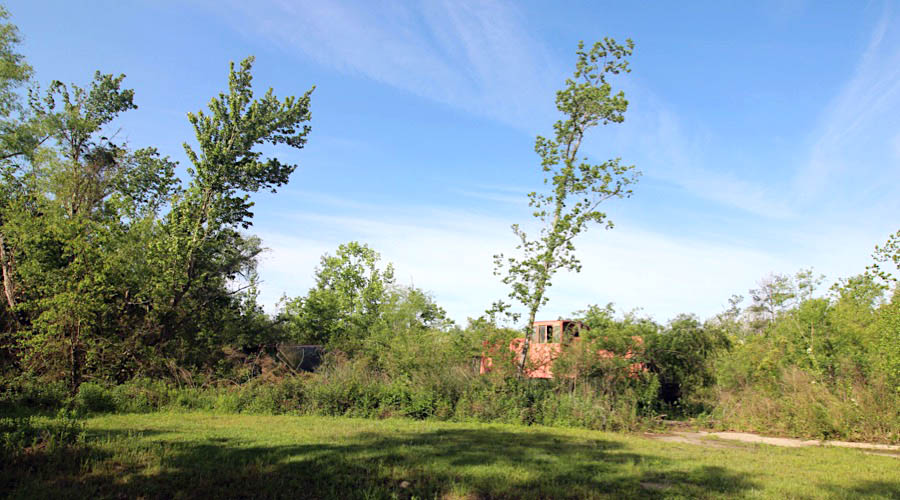
Picayune, Ms / Apr 2022 / RWH
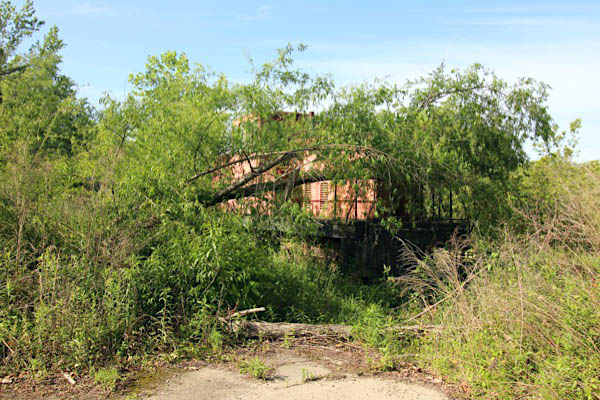
Picayune, Ms / Apr 2022 / RWH
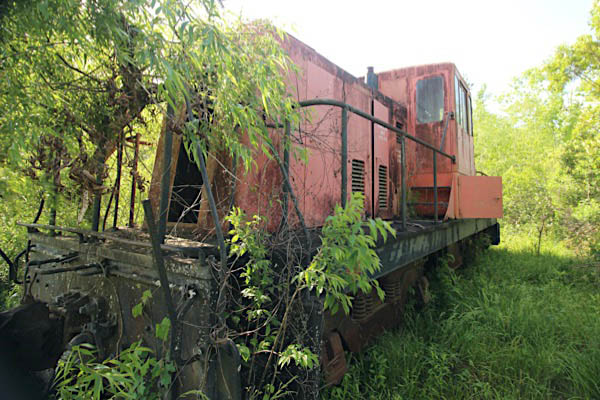
Picayune, Ms / Apr 2022 / RWH
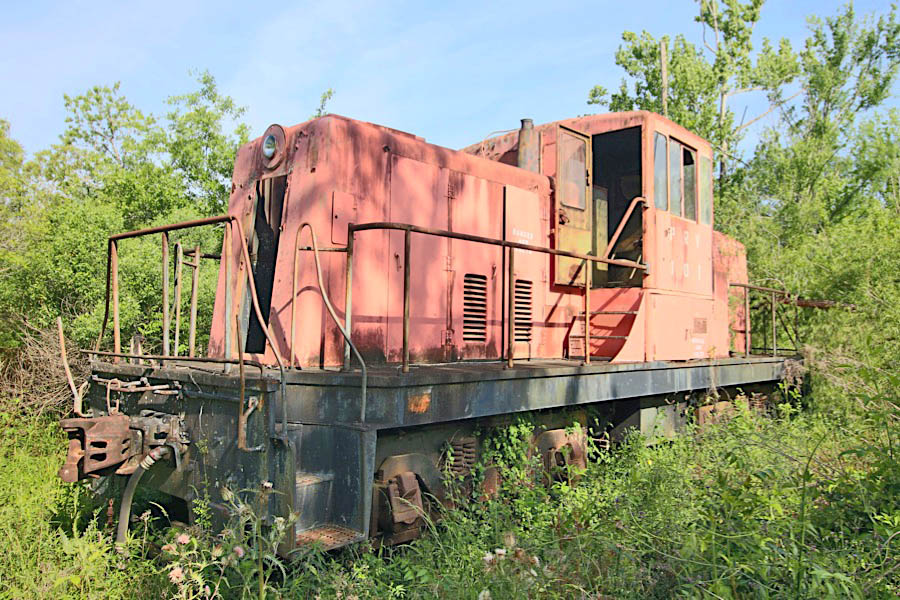
Picayune, Ms / Apr 2022 / RWH
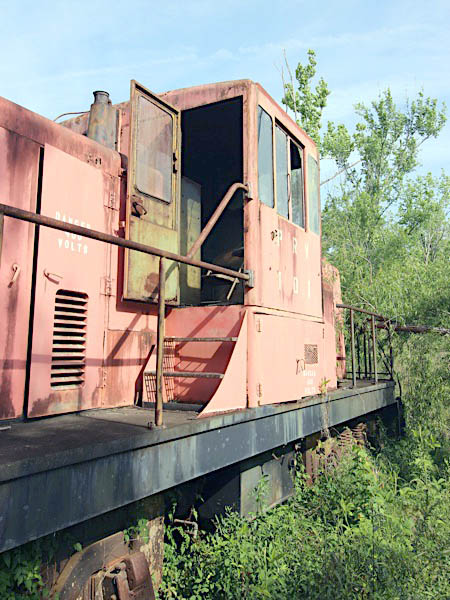
Apr 2022 / RWH
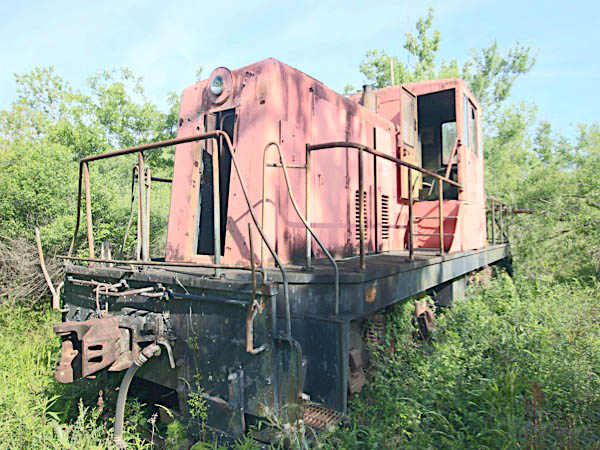
Picayune, Ms / Apr 2022 / RWH
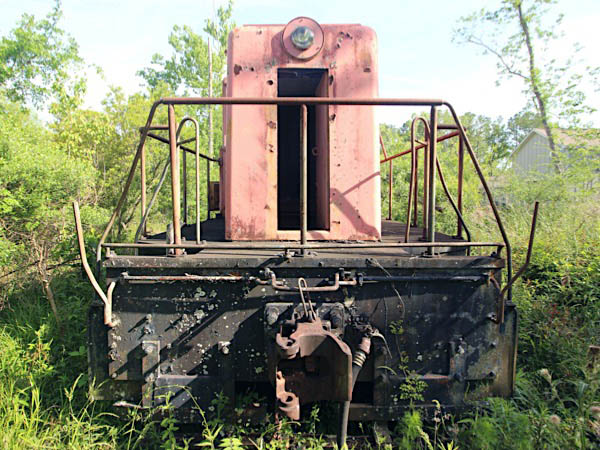
Picayune, Ms / Apr 2022 / RWH
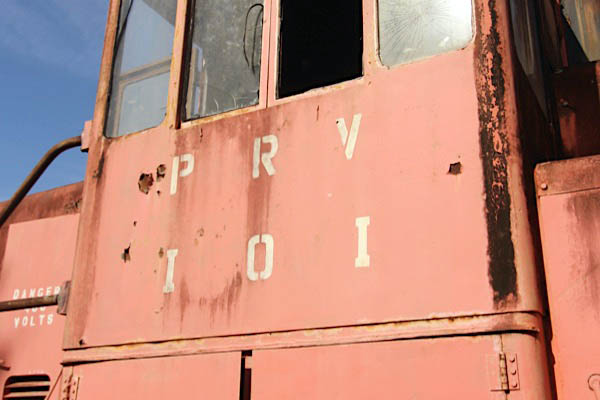
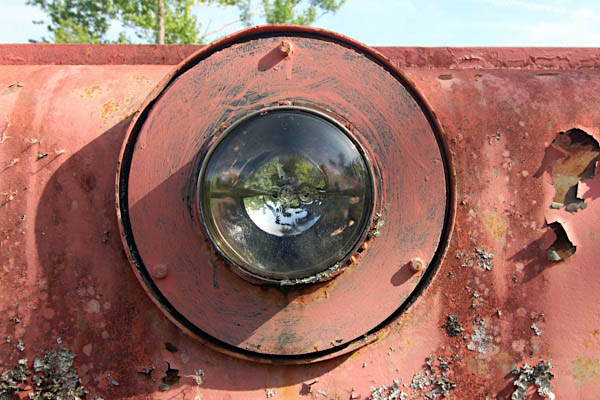
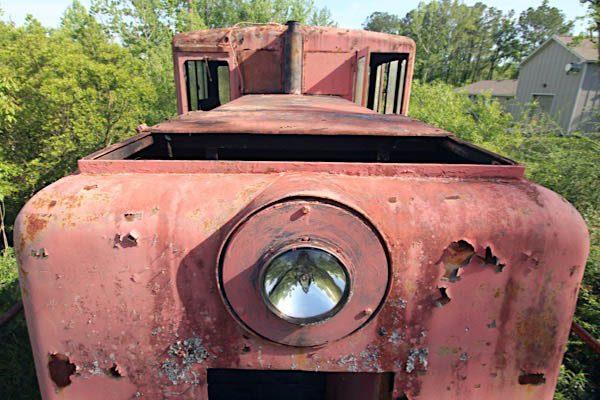
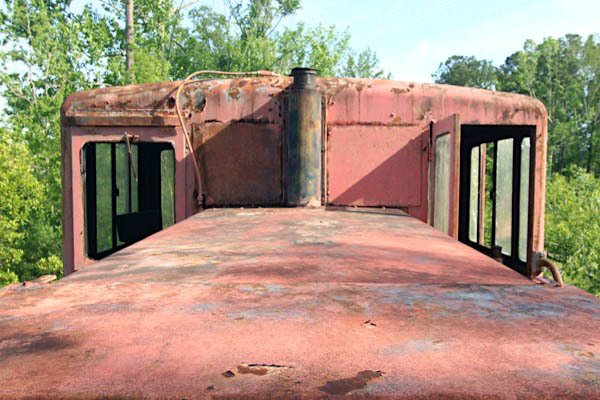
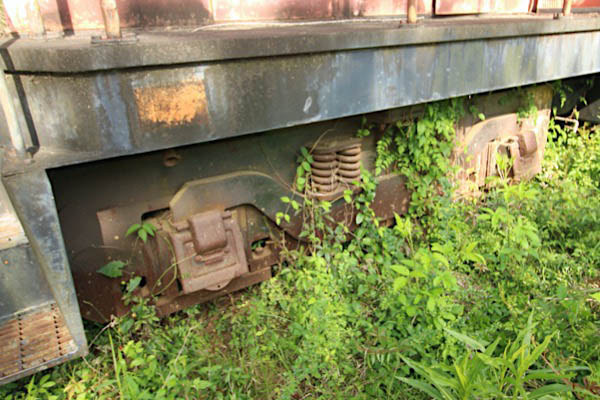
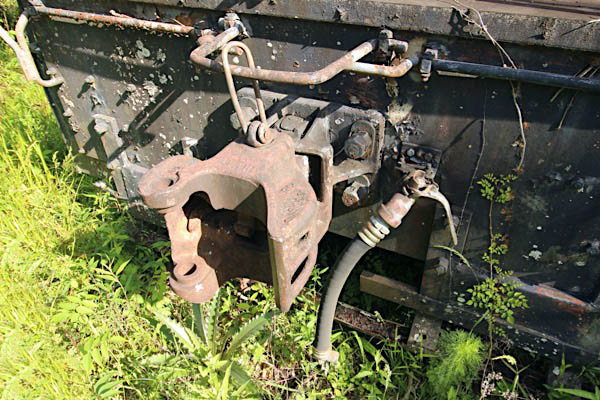
Apr 2022 / RWH
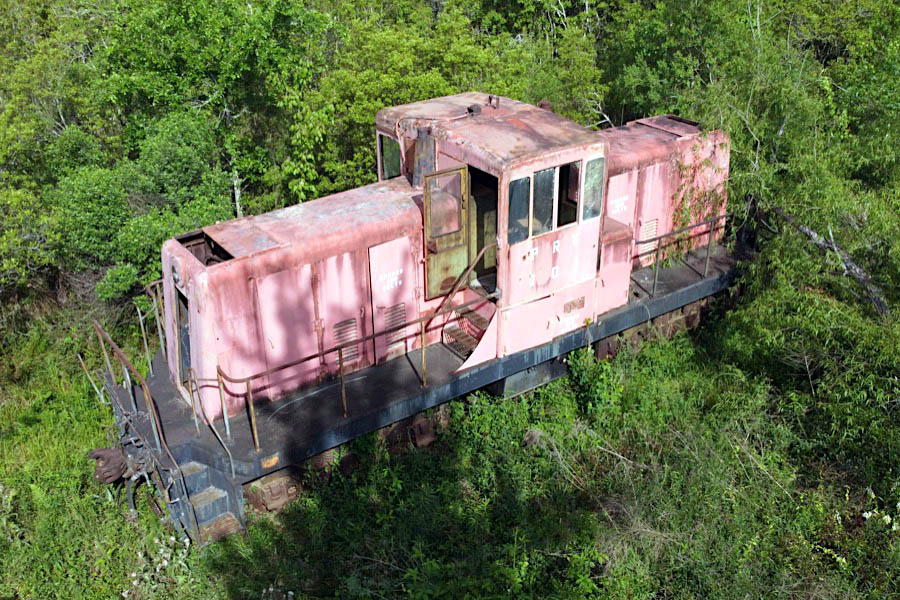
Picayune, Ms / Apr 2022 / RWH
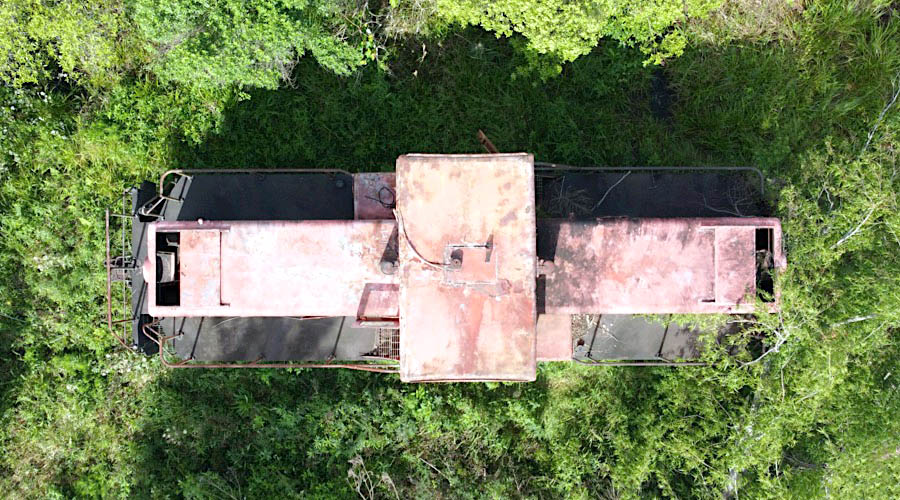
Picayune, Ms / Apr 2022 / RWH
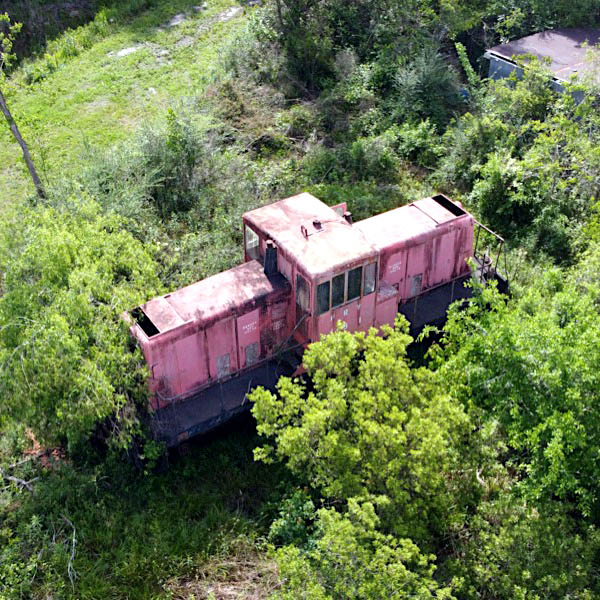
Apr 2022 / RWH
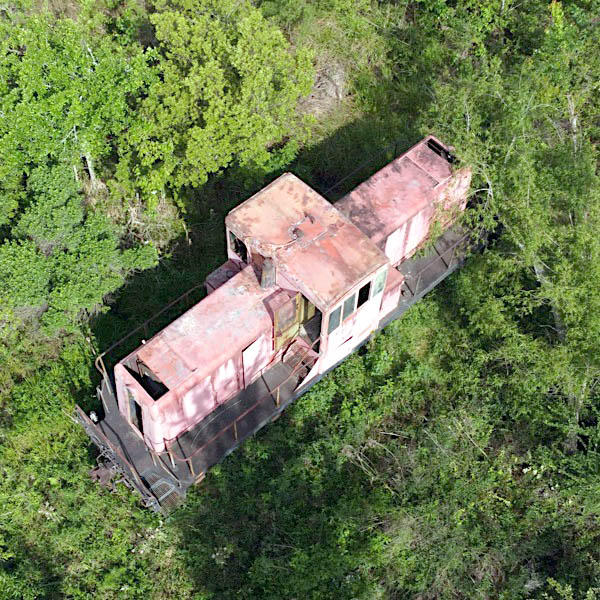
Apr 2022 / RWH
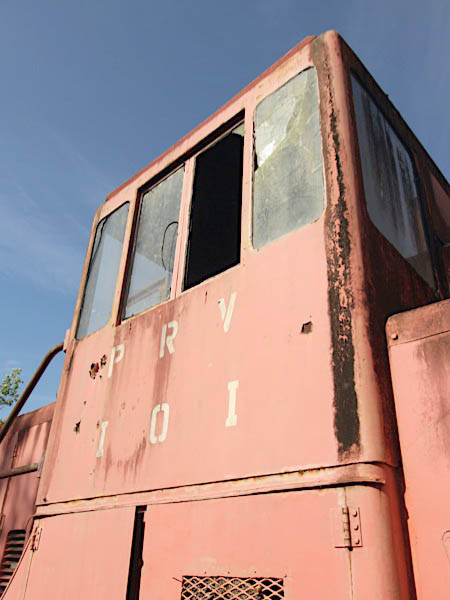
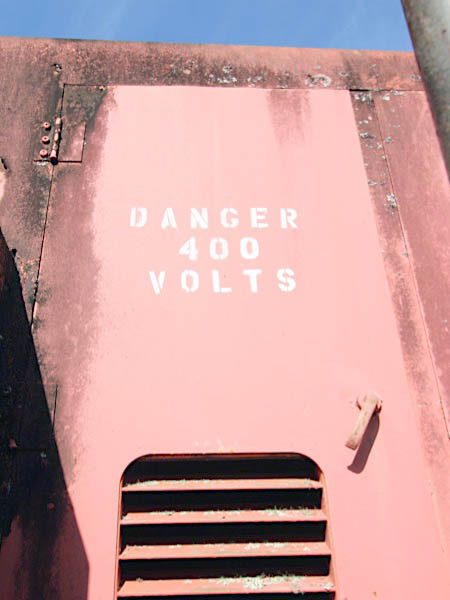
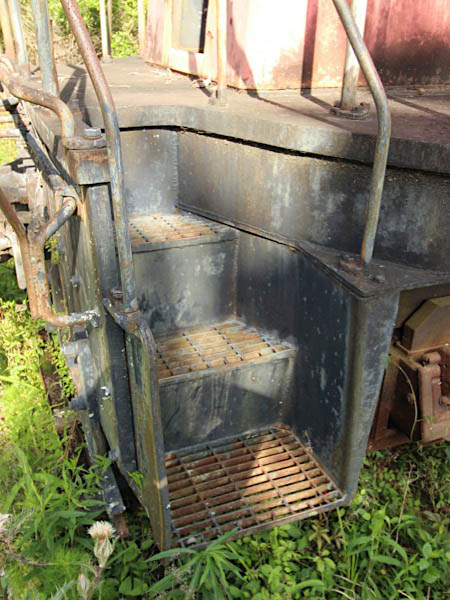
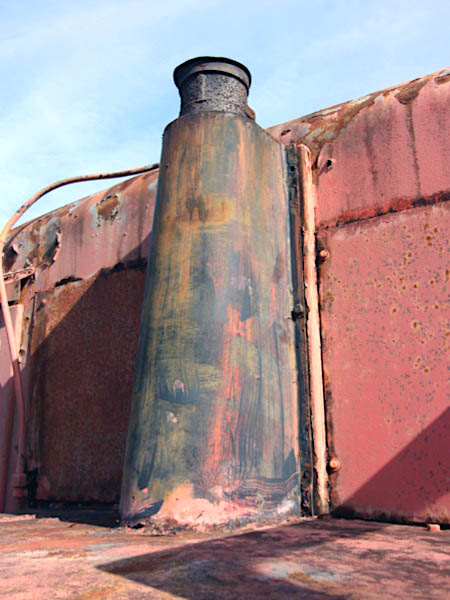
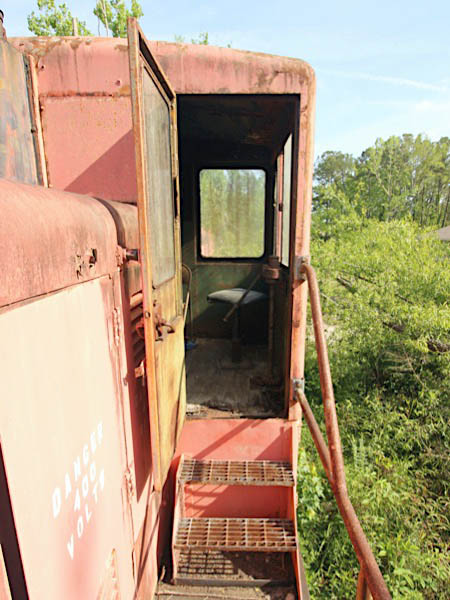
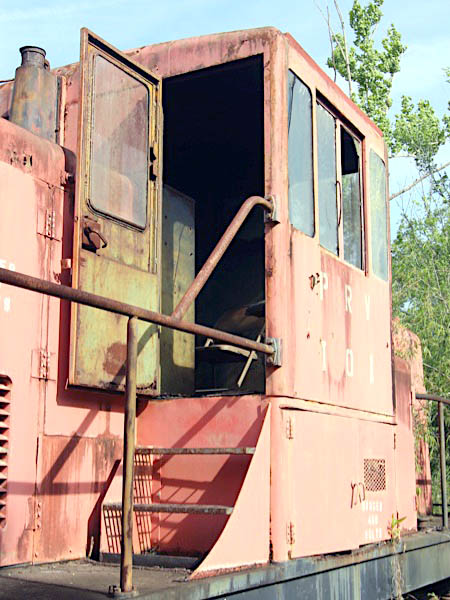
Apr 2022 / RWH
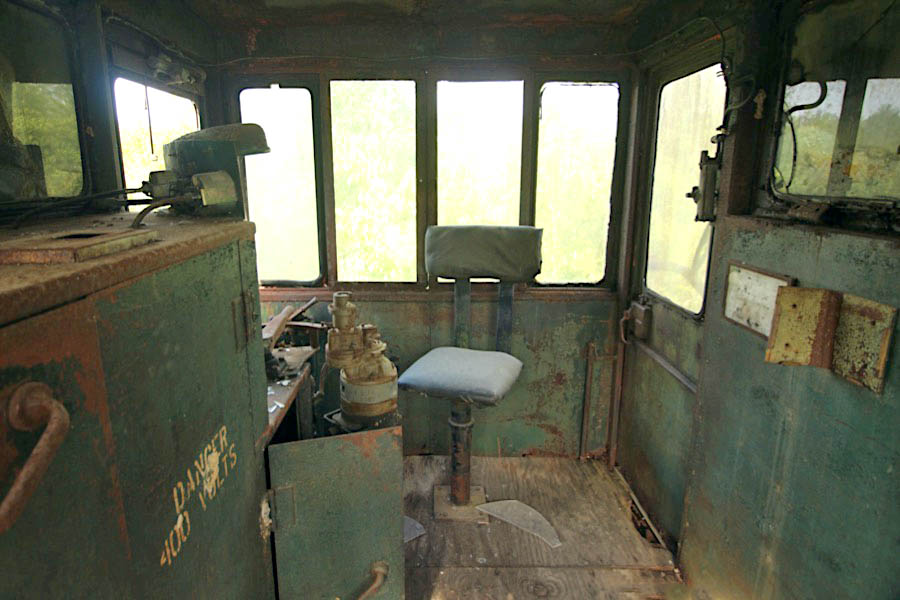
Apr 2022 / RWH
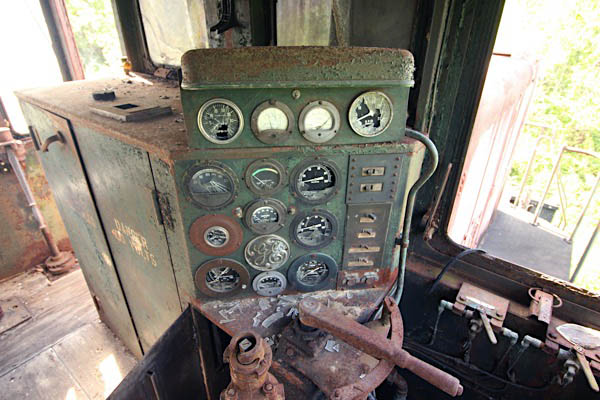
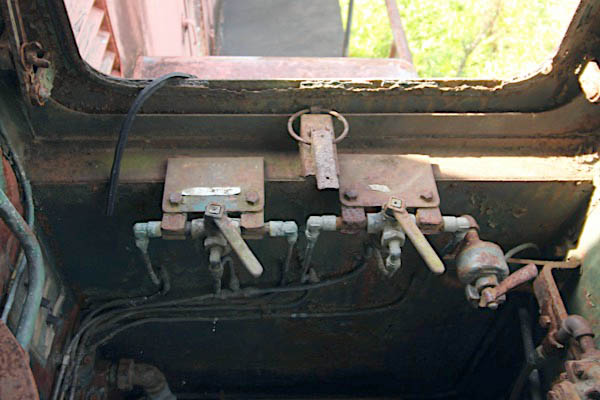
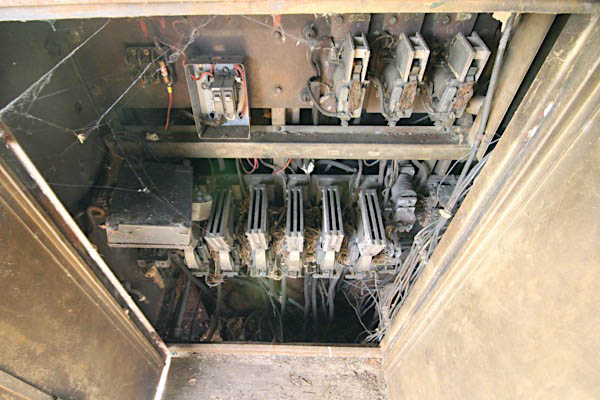
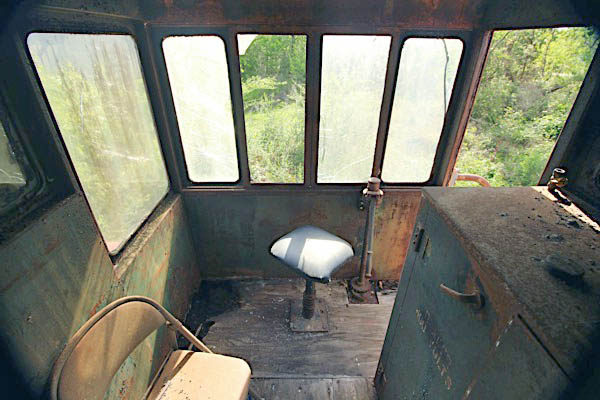
Apr 2022 / RWH
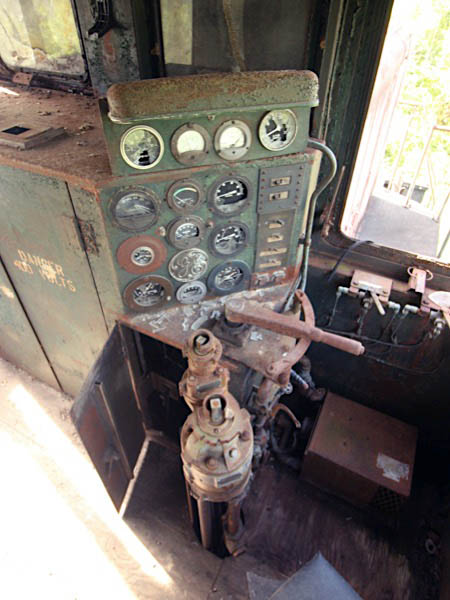
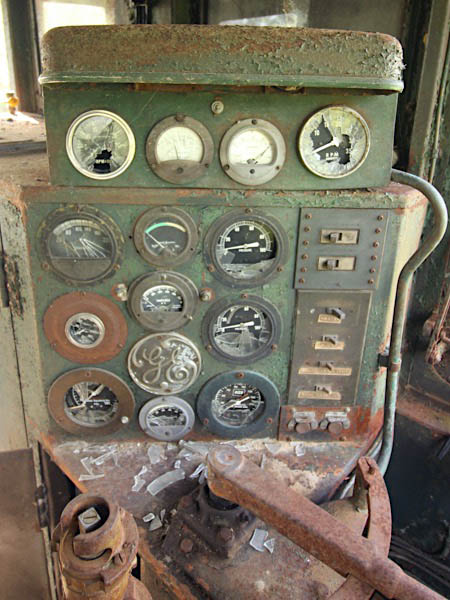
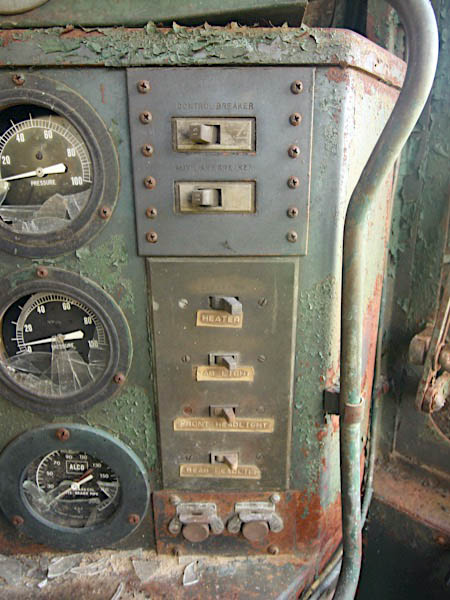
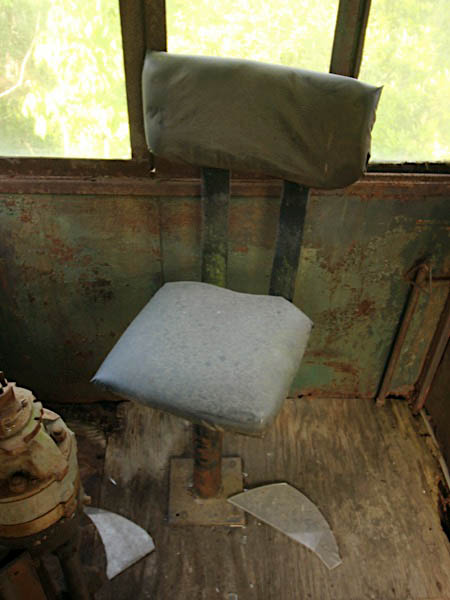
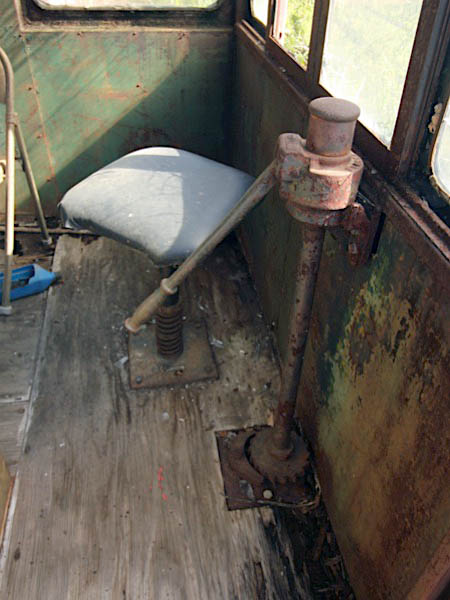
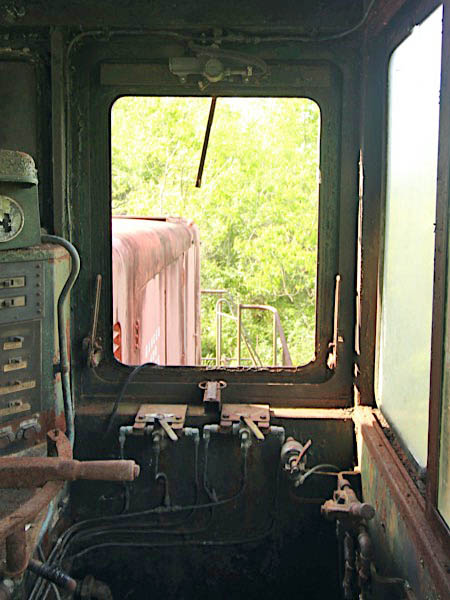
Apr 2022 / RWH
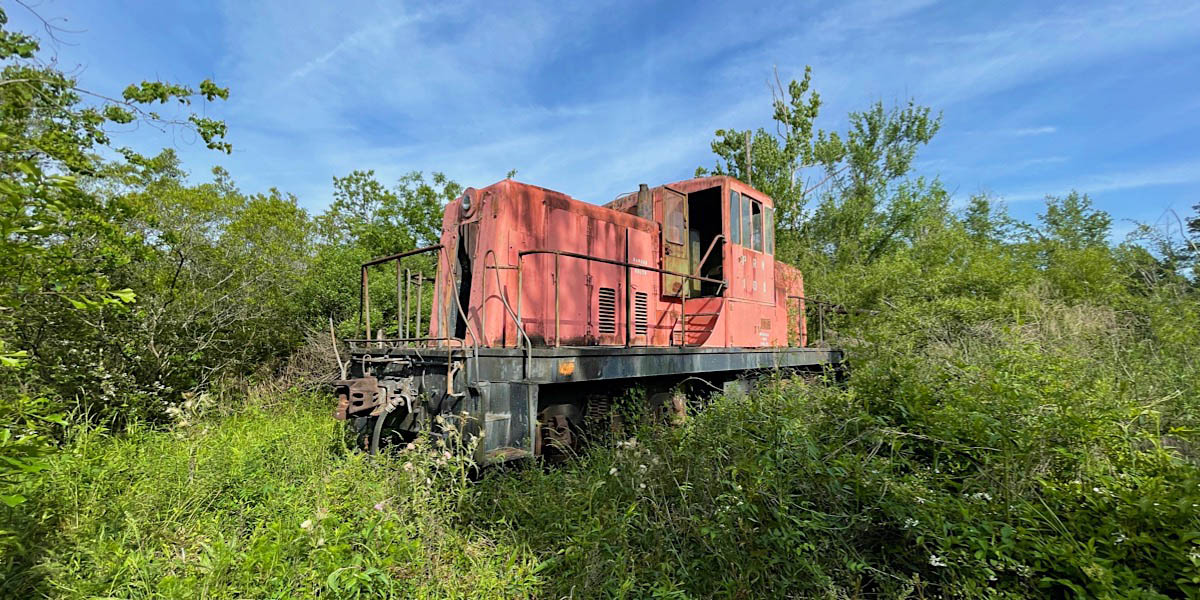
Picayune, Ms / Apr 2022 / RWH
 Shay #1
Shay #1
The informal logging railroads of the Goodyear Yellow Pine Co. and the Rosa Lumber Co. were jointly incorporated as the Pearl River Valley Railroad in 1917. Both lumber companies operated private logging spurs off of the Pearl River Valley, which was built northward into the lumber companies' timber holdings. Shay #1, now on display in downtown Picayune, Mississippi, is lettered for successor Pearl River Valley Railroad in recognition of the companies' affiliation.
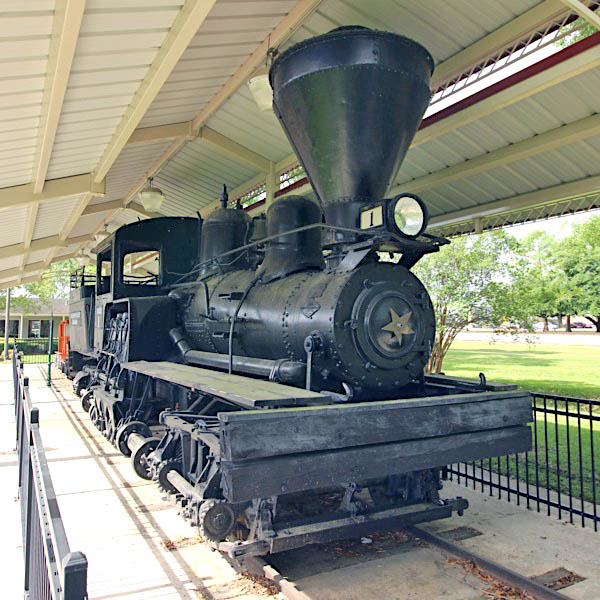
Goodyear Yellow Pine Co. #1
Picayune, Ms / Apr 2022 / RWH


Goodyear Yellow Pine Co. #1
to Goodyear Yellow Pine Co. #1
to Crosby Forest Products Co. #1
to City of Picayune, Ms - on display
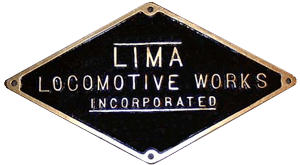
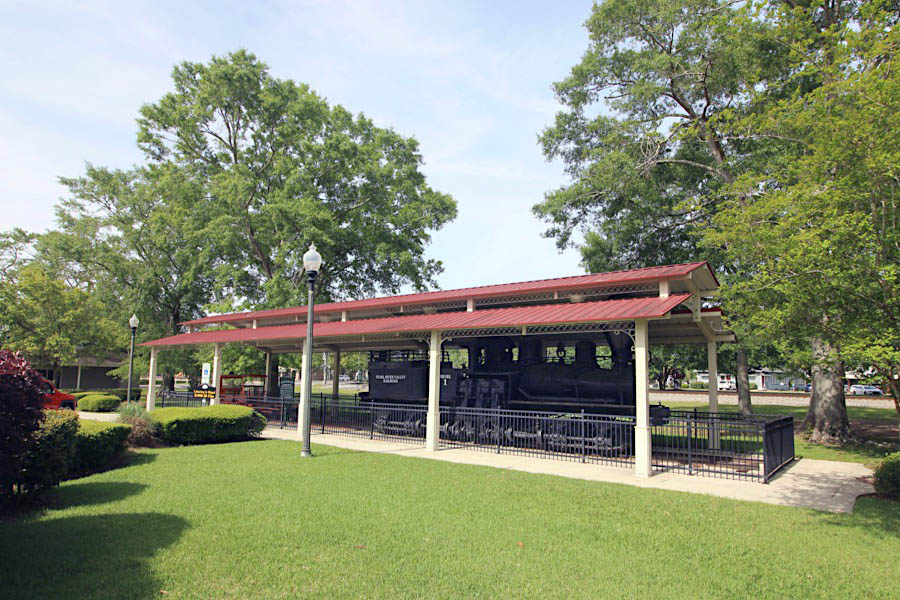
Picayune, Ms / Apr 2022 / RWH

Click to see the downtown Shay Locomotive display plotted on a Google Maps page

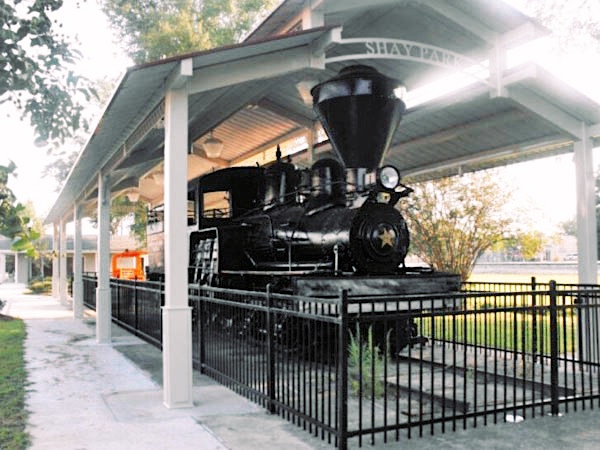
 his wood burning, gear-driven Shay locomotive, one of the last of about 4,000 which were used in logging operations in the South in the early Twentieth Century, was given to the City of Picayune by L.O. Crosby, Jr.
Crosby-owned Goodyear Yellow Pine Company and Rosa Lumber Company, both located nearby, owned ten or fifteen of these engines during operations from about 1916 to 1939. There were many others in Pearl River County, and hundreds in the State of Mississippi.
This engine, produced in 1925 by the Lima Locomotive Works, Inc., was numbered 3281, and was produced on patents taken out February 18, 1908, and subsequently. These engines were wood-burning, getting fuel from scrap in the woods. The odd, inverted coffee pot smokestack was covered with a screen and was designed to catch sparks and prevent woods fires.
his wood burning, gear-driven Shay locomotive, one of the last of about 4,000 which were used in logging operations in the South in the early Twentieth Century, was given to the City of Picayune by L.O. Crosby, Jr.
Crosby-owned Goodyear Yellow Pine Company and Rosa Lumber Company, both located nearby, owned ten or fifteen of these engines during operations from about 1916 to 1939. There were many others in Pearl River County, and hundreds in the State of Mississippi.
This engine, produced in 1925 by the Lima Locomotive Works, Inc., was numbered 3281, and was produced on patents taken out February 18, 1908, and subsequently. These engines were wood-burning, getting fuel from scrap in the woods. The odd, inverted coffee pot smokestack was covered with a screen and was designed to catch sparks and prevent woods fires.
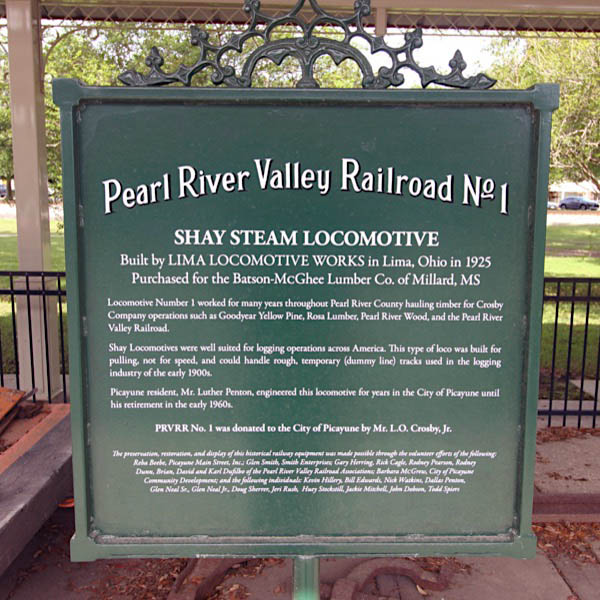
Apr 2022 / RWH
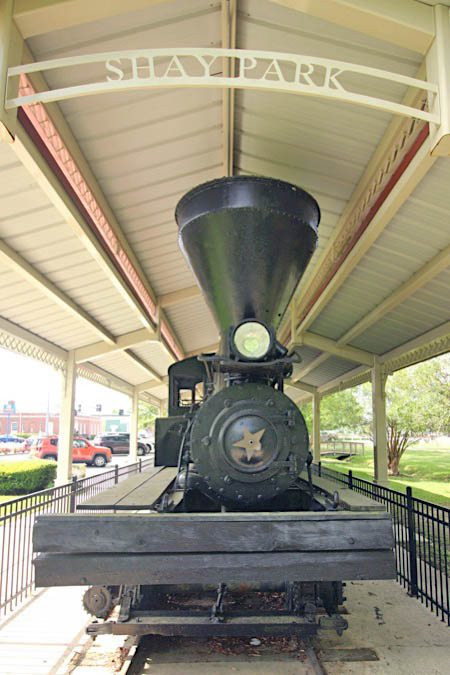
Apr 2022 / RWH
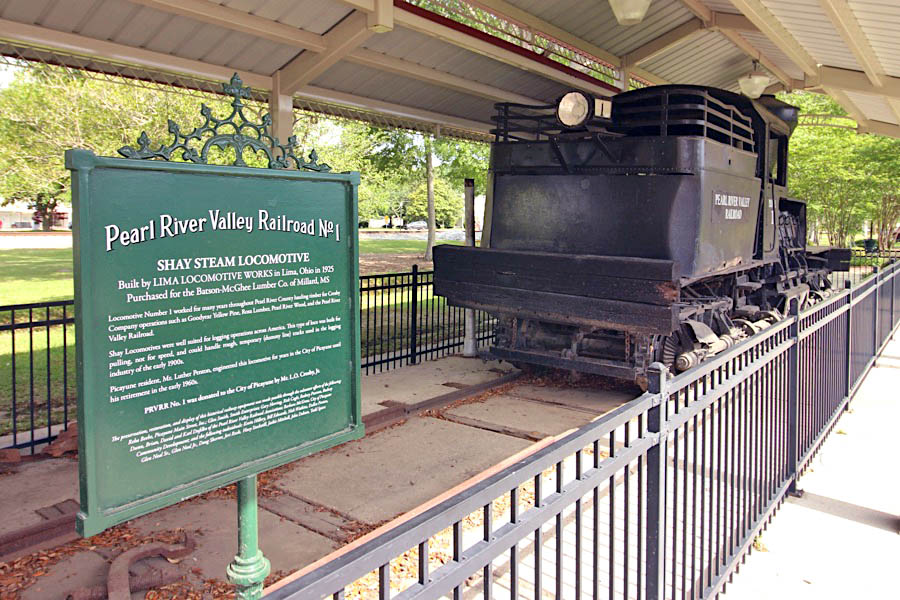
Picayune, Ms / Apr 2022 / RWH
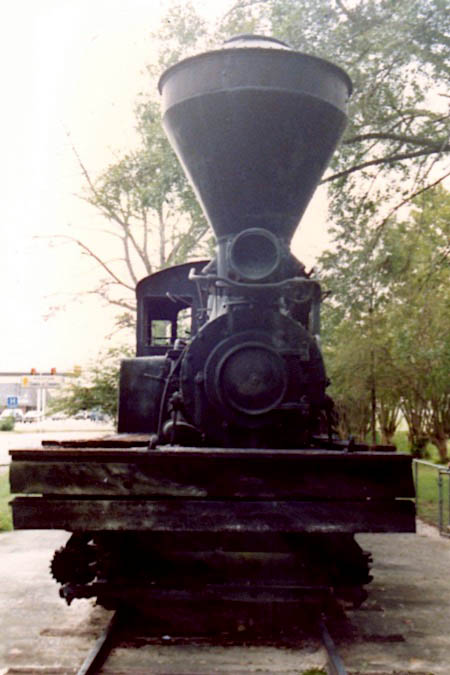
Picayune, Ms / Sep 1988 / JCH
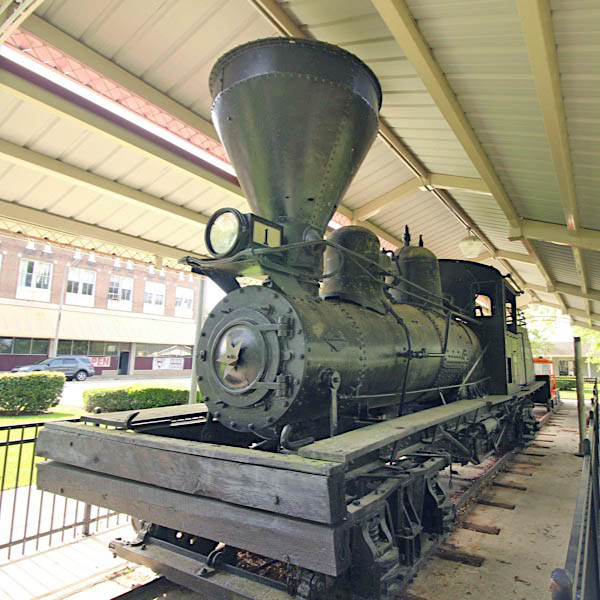
Picayune, Ms / Apr 2022 / RWH
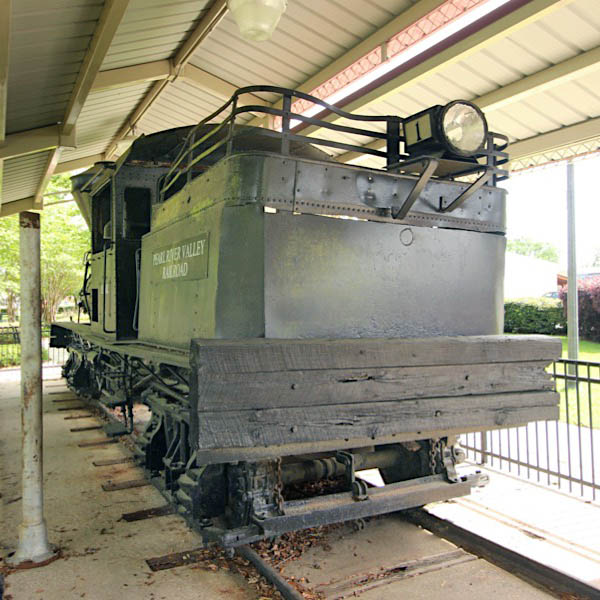
Picayune, Ms / Apr 2022 / RWH
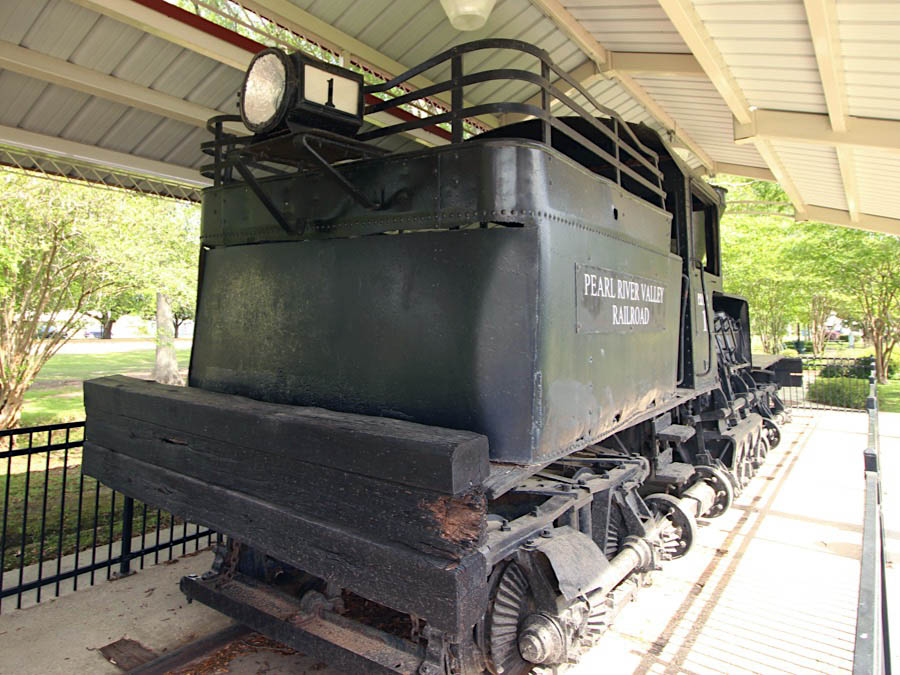
Picayune, Ms / Apr 2022 / RWH
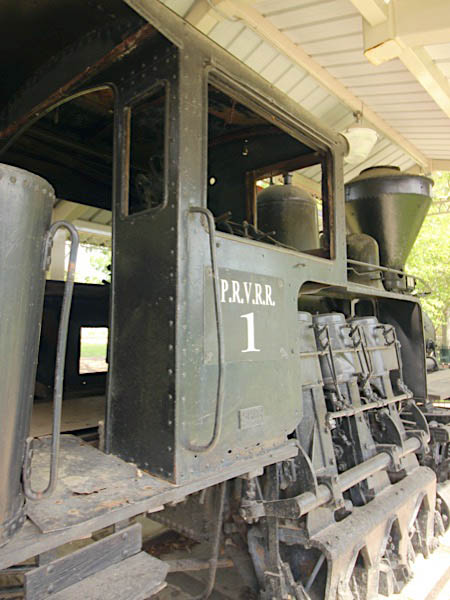
Apr 2022 / RWH
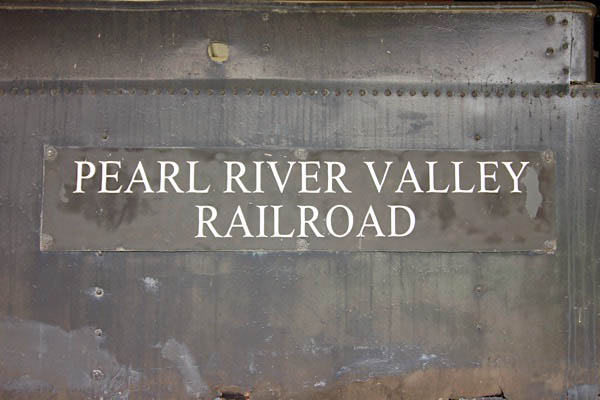
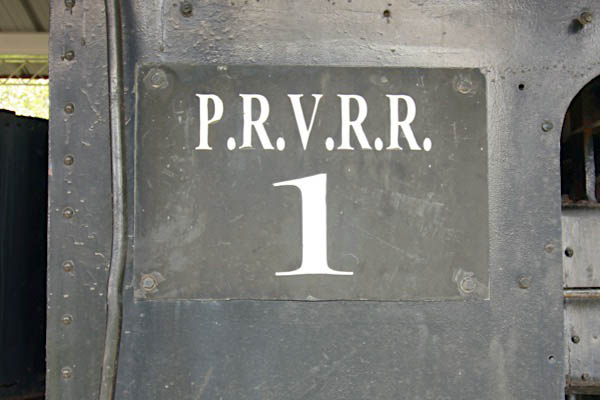
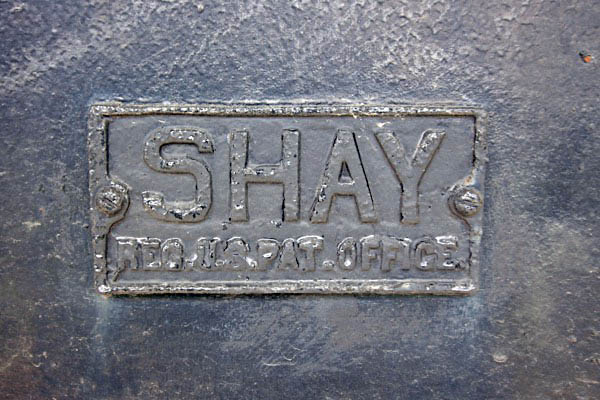
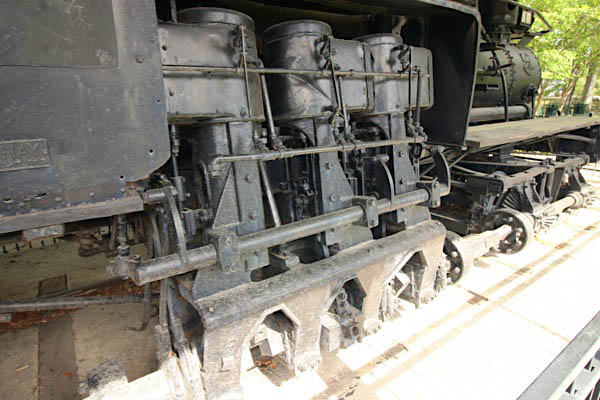
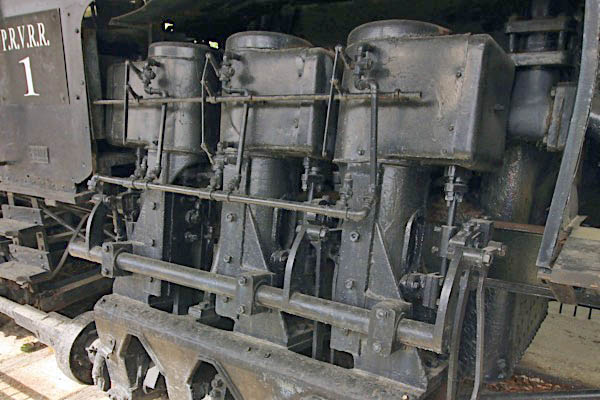
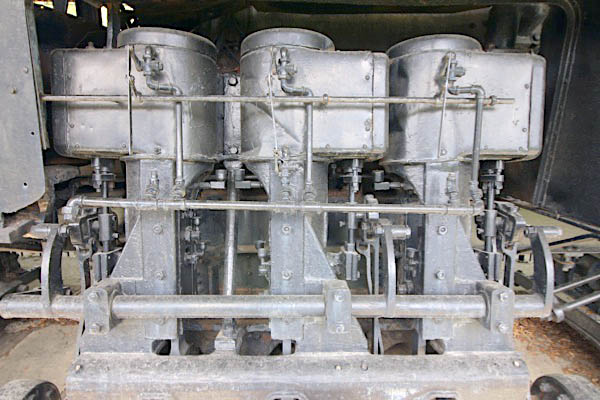
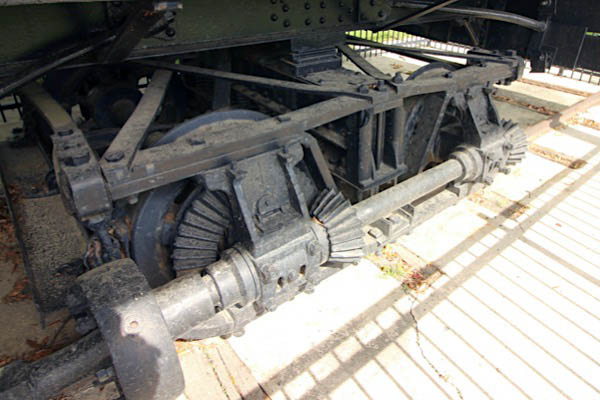
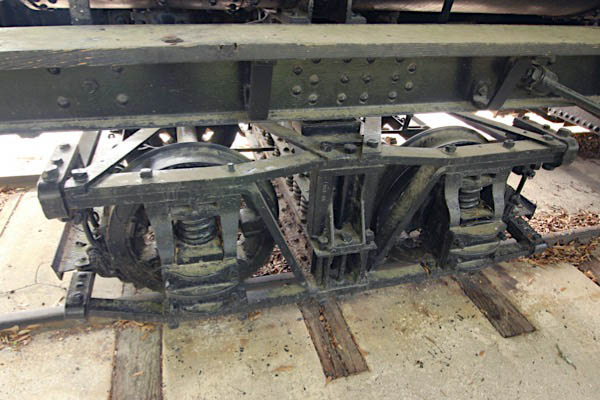
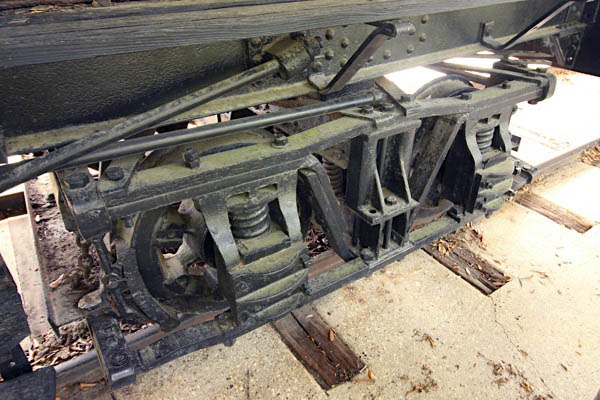
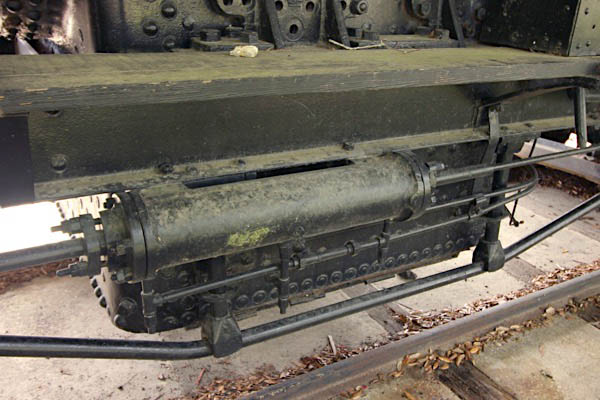
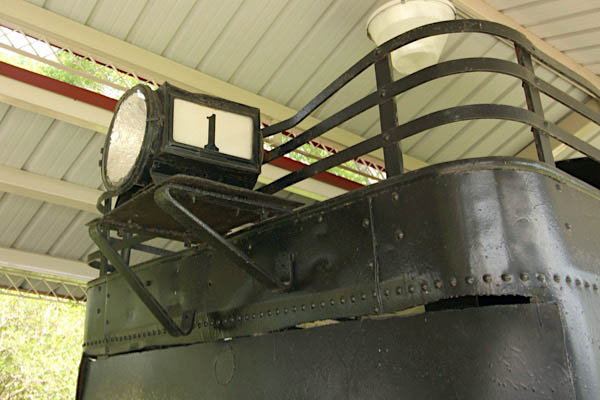
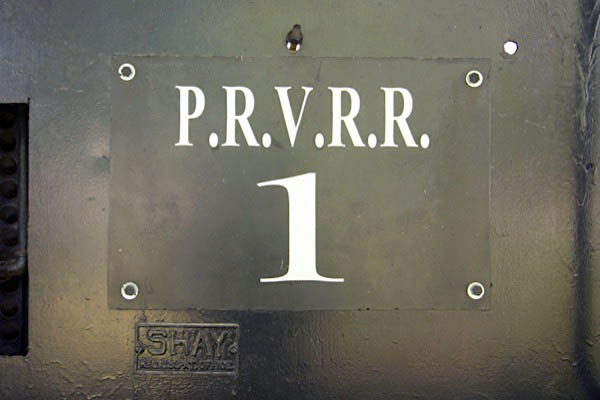
Apr 2022 / RWH
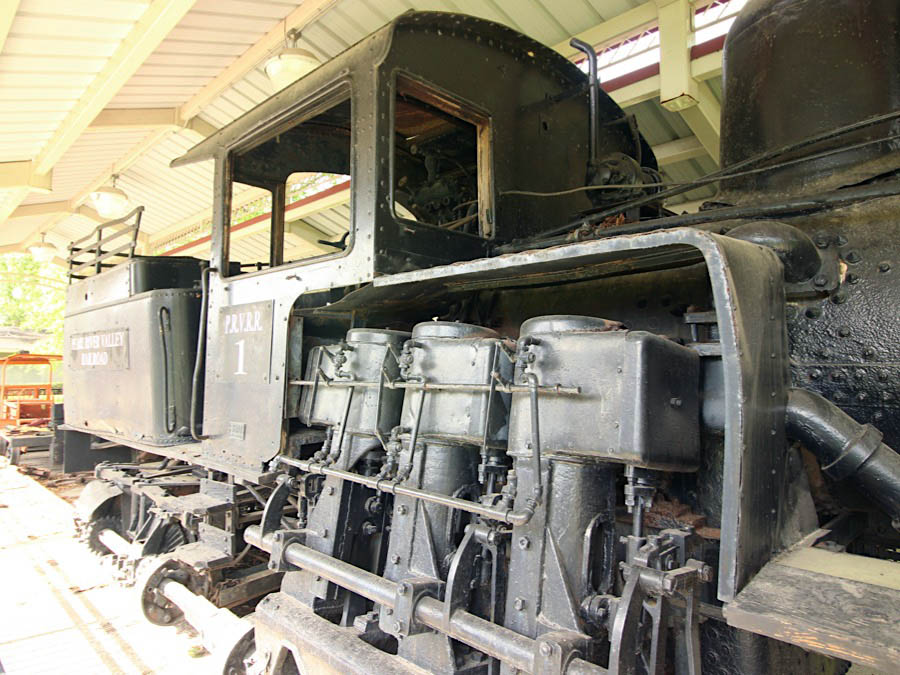
Apr 2022 / RWH
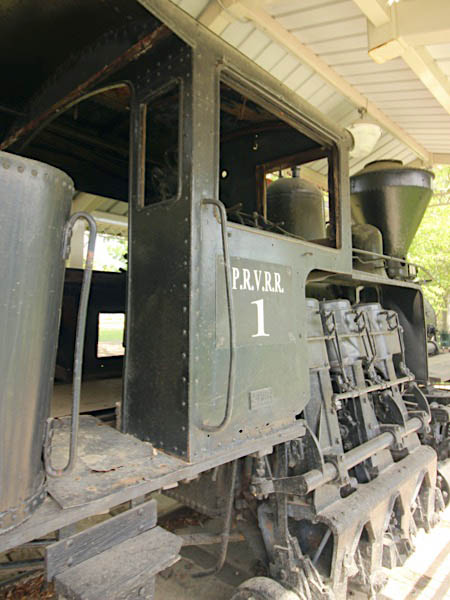
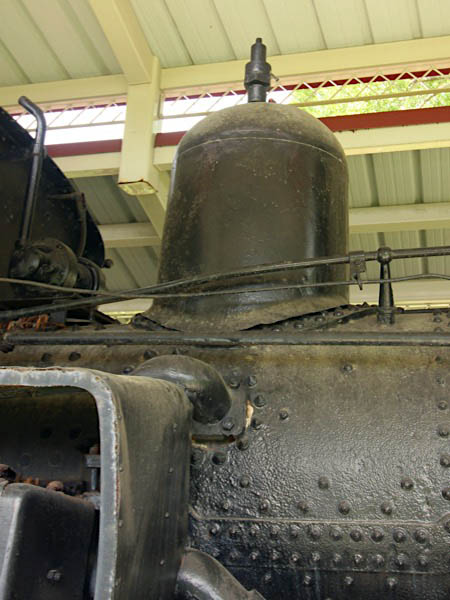
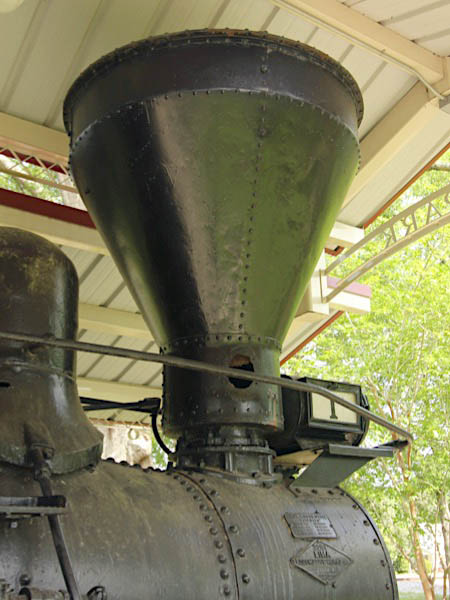
Apr 2022 / RWH
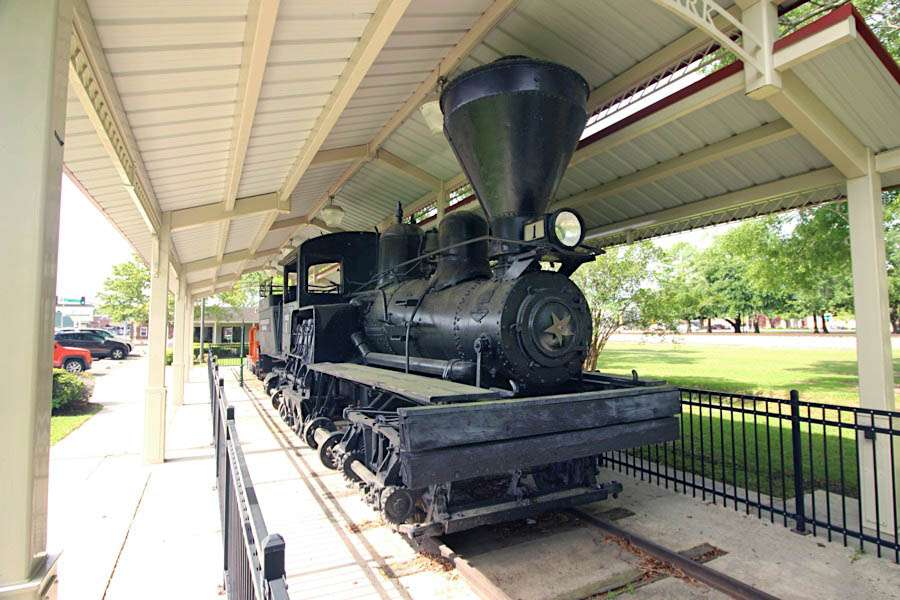
Picayune, Ms / Apr 2022 / RWH
 Lagniappe
Lagniappe
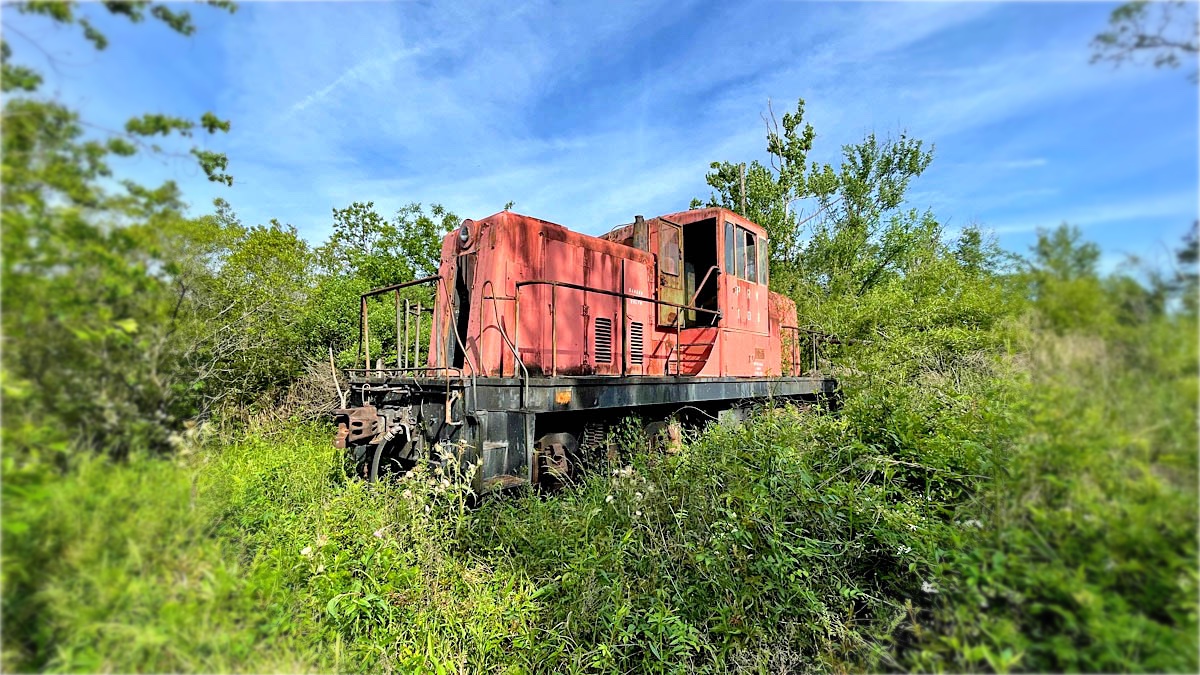
Abandonment Issues
Picayune, Ms / Apr 2022 / RWH
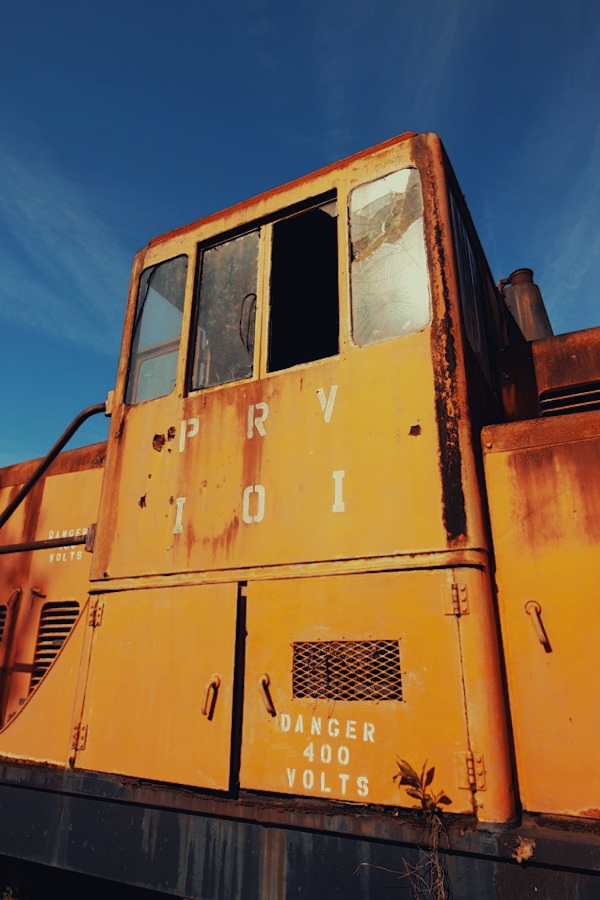
Control Tower
Apr 2022 / RWH
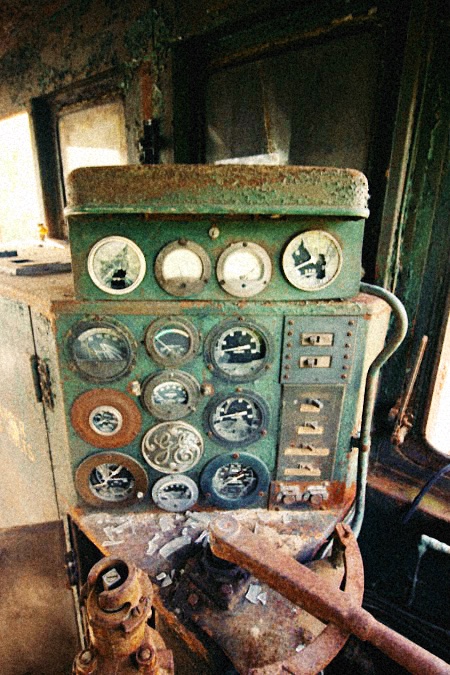
Control Issues
Apr 2022 / RWH
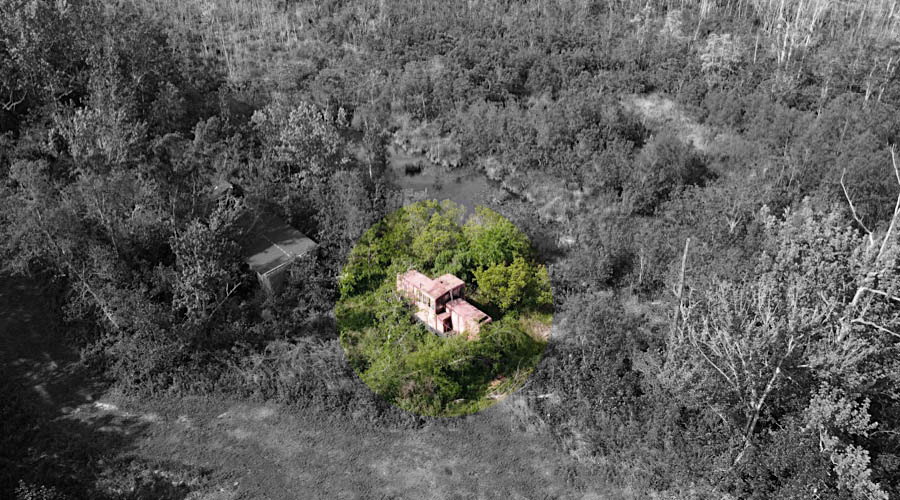
Trainspotting
Picayune, Ms / Apr 2022 / RWH
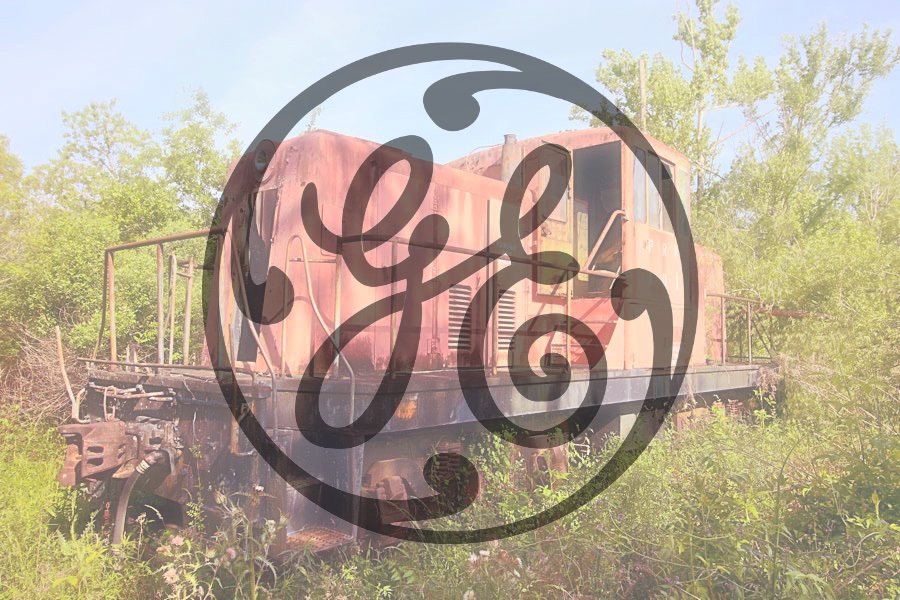
A General Electric Appliance
Picayune, Ms / Apr 2022 / RWH
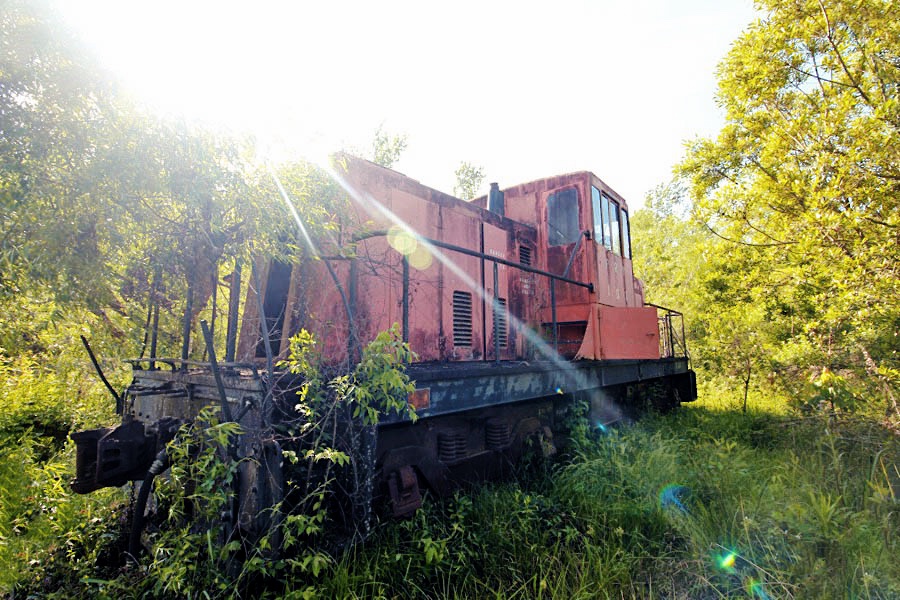
Centercab Sunrise
Picayune, Ms / Apr 2022 / RWH

Prayer for Illumination
Picayune, Ms / Apr 2022 / RWH
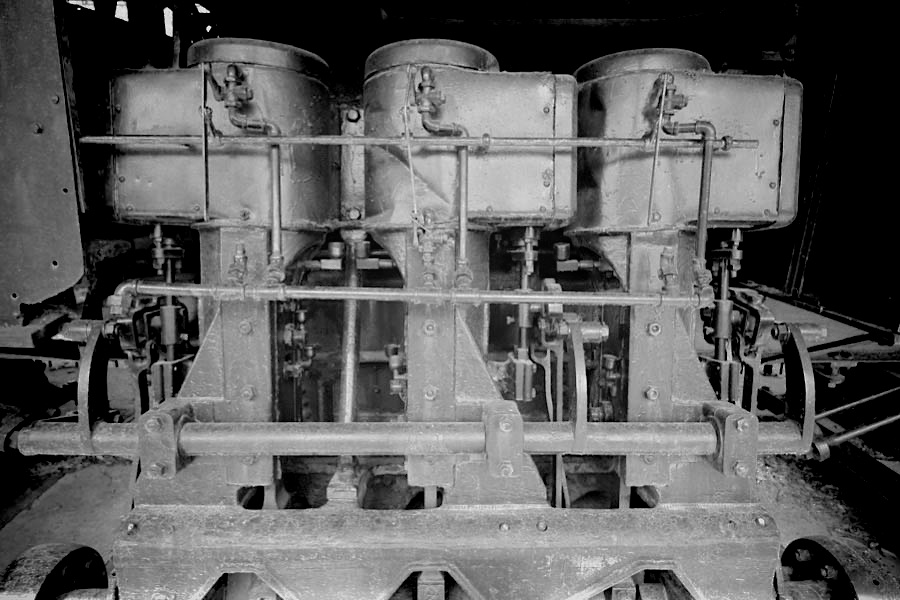
Trinitarian Formula
Picayune, Ms / Apr 2022 / RWH
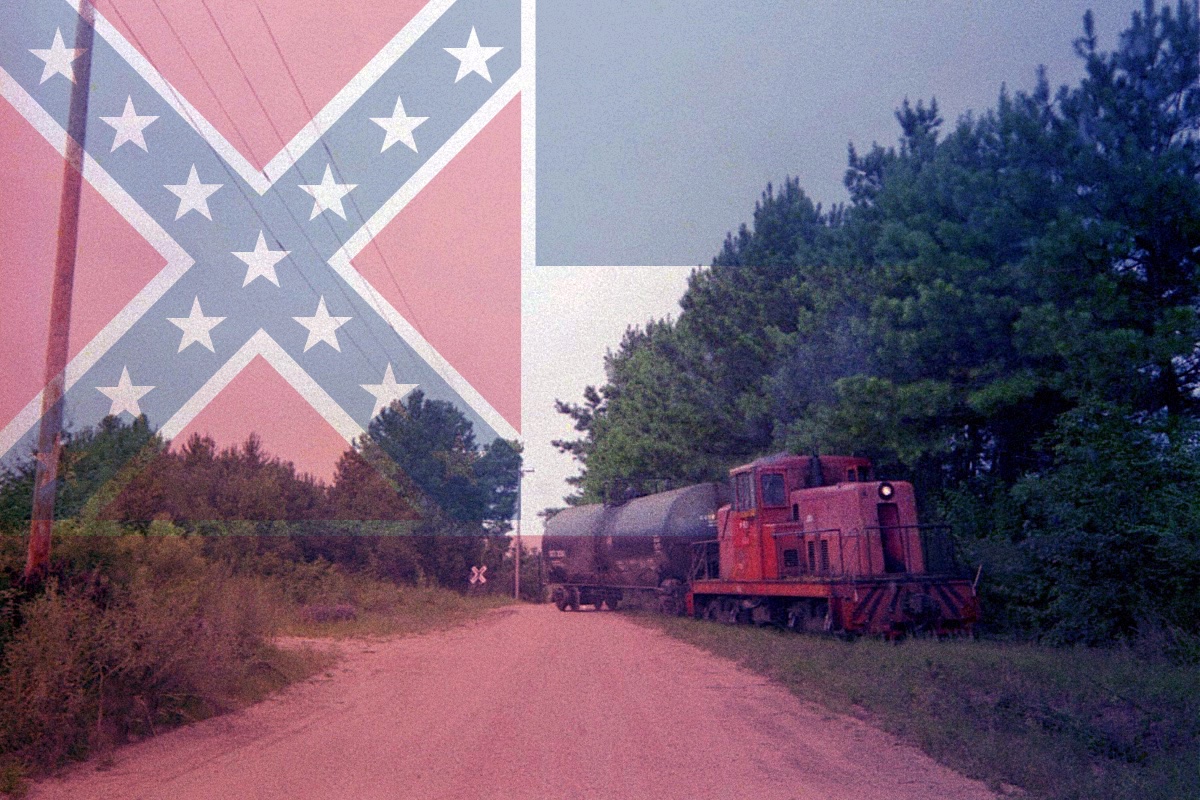
Mississippi Railroading
photo Jim Christopher / artwork RWH
 Snapshots
Snapshots
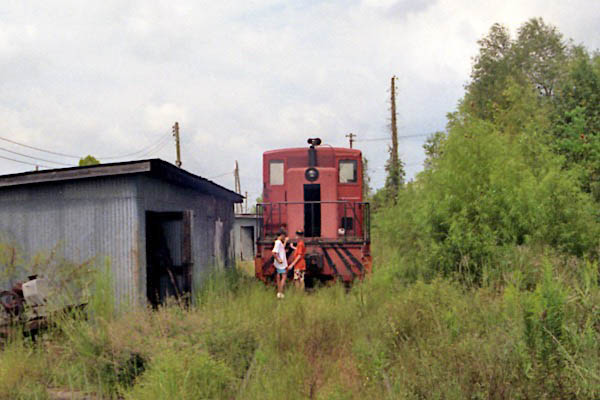
Picayune, Ms / Sep 1988 / JCH
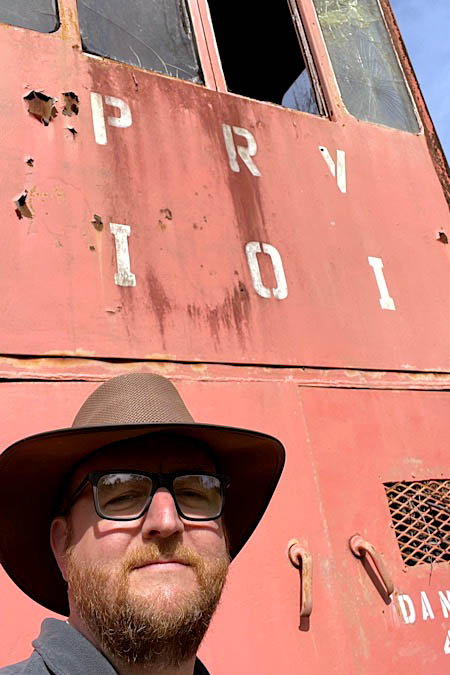
Apr 2022 / RWH
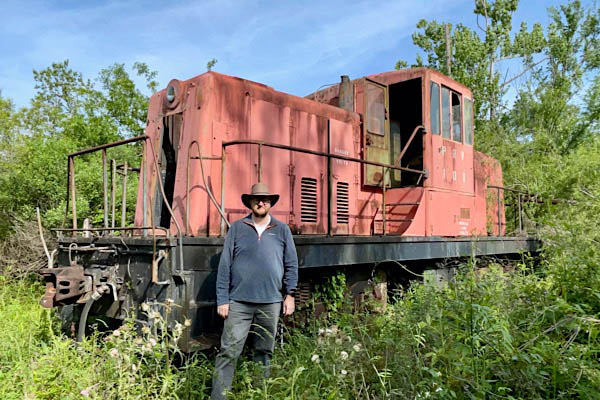
Picayune, Ms / Apr 2022 / RWH
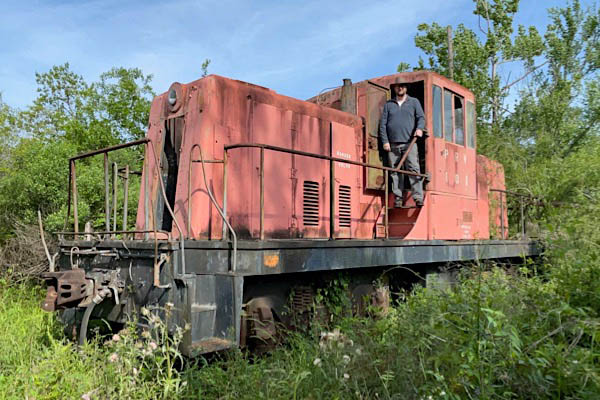
Picayune, Ms / Apr 2022 / RWH
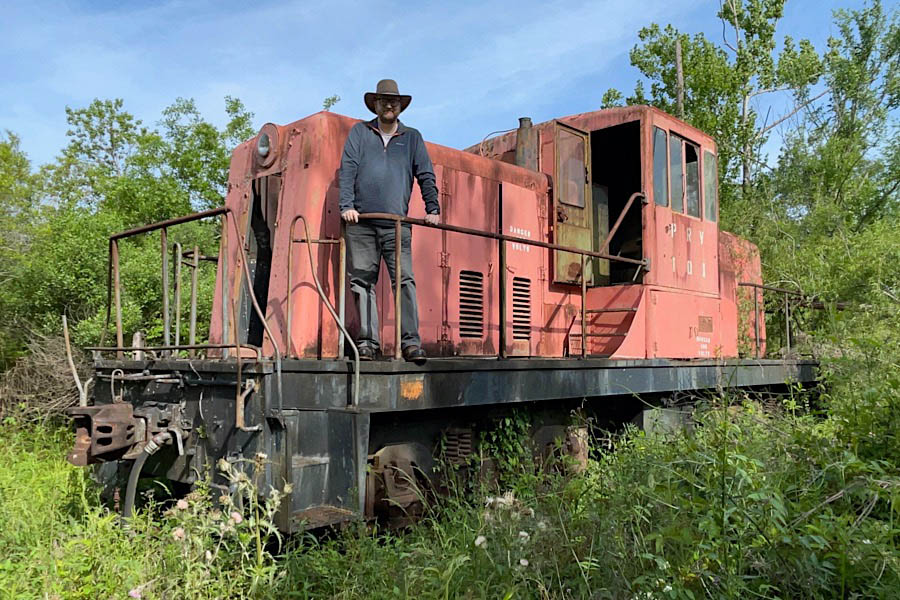
Picayune, Ms / Apr 2022 / RWH
Links / Sources
- Edward A. Lewis, American Shortline Railway Guide - Fifth Edition (Kalmbach, 1996) 243
- "The Pearl River Valley Railroad" by James Christopher - Jan 2009 Hattiesburg NRHS bulletin The Sandhouse
- Mississippi Rails Pearl River Valley page
